Why Our Agency Doesn’t Manage TikTok for Apartments
With its skyrocketing user base and trendsetting influence, TikTok has become a platform that marketers cannot ignore.
As of 2024, TikTok boasts over 1 billion active users, many of whom are from younger demographics, increasingly driving consumer trends. In fact, a third of U.S. adults say they use TikTok, including 39% of adults aged 30-49, and 24% of adults aged 50-64.
But for multifamily marketers, the question remains: Is TikTok worth the time and resources? Can it really deliver tangible results, such as leases, or is it just an engaging addition to the marketing mix without a direct return?

The Rise of TikTok (and What This Means for Multifamily)
TikTok’s rapid growth is undeniable. The platform’s focus on short-form, engaging video content has set it apart from other social platforms. It’s a platform built for quick, organic reach where content has the chance to go viral and capture massive amounts of attention overnight. For multifamily marketers, the opportunity to creatively showcase properties, amenities, and community culture is enticing.
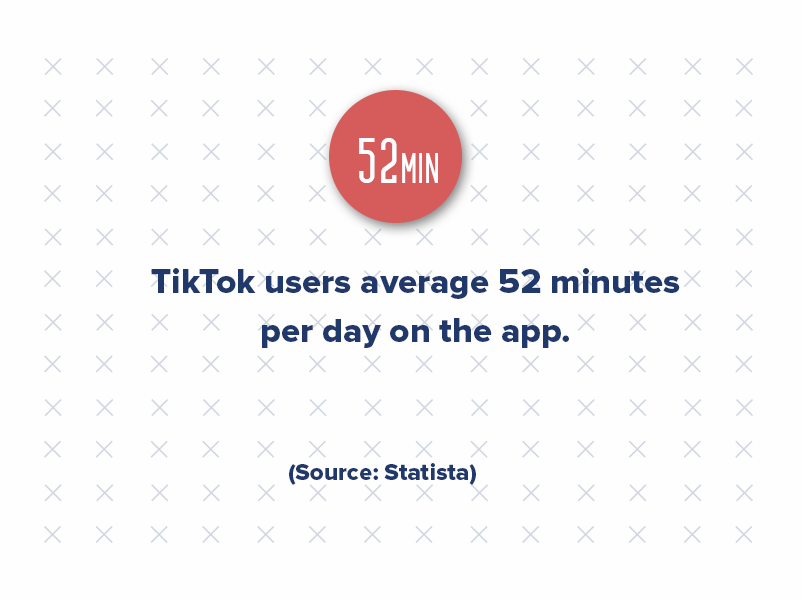
According to recent data, TikTok users average 52 minutes per day on the app, more than many other platforms, suggesting strong engagement levels that could translate to brand recognition and retention.
Many apartment communities have hopped on board, creating property tours, resident testimonials, and local event features to attract prospective renters and engage current residents.
Authenticity on TikTok vs. Agency Management
While TikTok offers unique opportunities for multifamily marketers, the nature of its content poses challenges for agencies aiming to manage this platform on behalf of properties.
Authenticity is essential on TikTok, as its algorithm favors content that feels organic, spontaneous, and genuine — qualities that often come directly from community members or on-site property staff. This focus on realness can make it difficult for agencies to effectively manage a property’s TikTok presence.
Users are drawn to content that feels relatable and unpolished, making videos created by residents or on-site staff more impactful than those produced by external teams.
As Bryan Melchert, owner of Mitten Home Buyer, puts it, “I’ve found success showcasing our renovations and community events. It’s challenging to balance authenticity with polished content, but TikTok’s reach makes it worthwhile. I believe investing time in TikTok pays off more than other platforms — the engagement we get is unmatched.”
This emphasis on authenticity introduces a tension when it comes to agency-created content. Agencies often aim for professional, polished materials, which don’t always resonate with TikTok audiences seeking a more casual, behind-the-scenes experience.
As Melchert points out, “Just be prepared for a learning curve as you figure out what resonates with your local audience.”
For multifamily properties, user-generated content like community events, renovation highlights, and property tours can drive the kind of authentic engagement TikTok rewards.
Another challenge lies in TikTok’s algorithm and ad offerings, which don’t align well with the specific needs of multifamily properties looking to reach local, high-intent audiences.
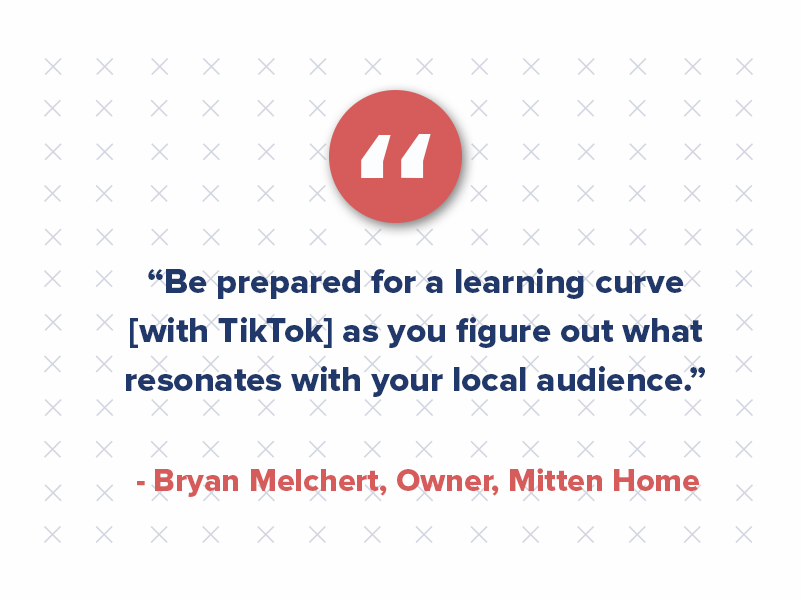
Here are some key reasons why an agency-managed TikTok strategy may not be as effective as expected:
- Lack of Geographic Targeting: Unlike Facebook or Google, TikTok lacks precise geo-targeting options. Marketers cannot narrow their target audience by zip code, which is a significant drawback for multifamily properties targeting potential renters within specific geographic areas.
- Audience Intent: TikTok users typically engage with entertaining, light-hearted content, meaning they may not be in a “searching for an apartment” mindset. Even if a property goes viral, there’s no guarantee that those interactions will convert to leases.
- The Importance of Authenticity: TikTok’s algorithm favors authentic, user-generated content over polished, brand-generated posts. Agencies managing TikTok often struggle to replicate the genuine tone that resonates on the platform.
Understanding Boosting on TikTok
Boosting posts on TikTok offers some value but is limited by the platform’s lack of precise targeting options.
Although boosting can amplify reach and engagement, the challenge is that boosted posts don’t necessarily reach the audience most likely to convert into renters. Much like Facebook advertising, TikTok lacks refined geographic targeting capabilities, critical for multifamily properties seeking to attract prospective residents within a local radius.
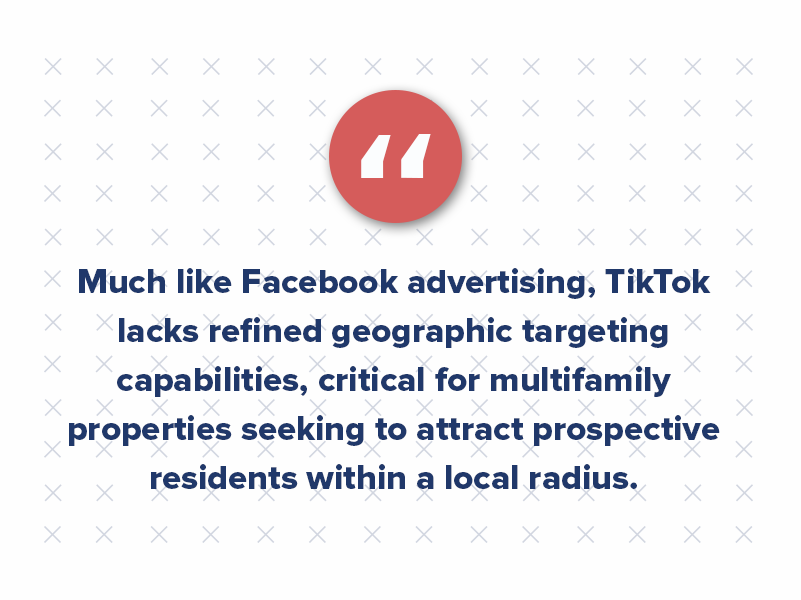
Here’s a closer look at the limitations and insights on boosting:
Reach Without Precision
Boosting posts on TikTok can expand reach significantly, but for multifamily marketers, the platform’s limited geographic targeting presents a challenge. While TikTok offers broad regional targeting, it lacks precision, making it difficult for properties in specific areas to reach local audiences effectively. For instance, a property in Austin, Texas, may find its boosted posts displayed statewide, nationwide, or even internationally — audiences unlikely to translate into viable leads.
Erik Wright, CEO of New Horizon Home Buyers, has seen this firsthand. “Boosted posts definitely do better when targeted locally — we saw about 3x more engagement,” Wright shares, highlighting the need for tighter geographic targeting. However, he notes that focusing on neighborhood amenities and lifestyle content has helped bypass Fair Housing limitations while still reaching relevant audiences. “It’s been worth investing some time in TikTok, especially for reaching younger renters. The organic reach is still pretty good compared to other platforms,” Wright adds. His team has generated qualified leads by creating engaging property tour videos and leaning into organic reach.
Wright’s approach aligns with the strategies used by Carl Fanaro, president of NOLA Buys Houses. “It’s definitely challenging to navigate Fair Housing regulations with limited targeting options, but we’ve found creative ways to work around it,” said Fanaro. Instead of targeting specific demographics, Fanaro’s team creates content that showcases property amenities and local attractions, naturally drawing in their target audience. “While it takes time and effort, I believe TikTok is worth investing in alongside other platforms.”
Despite the challenges, Wright and Fanaro find that TikTok’s organic reach is still competitive, especially for property tour videos and local lifestyle content. “The organic reach is still pretty good compared to other platforms,” Wright said. “We’ve gotten some good leads from fun property tour videos.” His advice? Give TikTok a try — but don’t neglect other channels that may offer more precise targeting and higher conversions.
Cost Efficiency and ROI
TikTok’s ad costs are generally lower than those of Google or Facebook. However, the limited targeting options mean marketers often pay for user engagement outside their desired demographic or geographic area. This cost-per-engagement approach can yield poor ROI for multifamily marketers focused on local leasing goals, whereas other platforms with more defined targeting options may yield better results.
Is Organic TikTok Growth Worth the Time?
TikTok’s organic reach is a strong point for many brands, allowing them to reach vast audiences without spending a dime. For multifamily marketers, organic reach can help boost brand recognition and attract potential renters with engaging, lifestyle-focused content that conveys the property’s culture.
However, organic reach on TikTok is a double-edged sword:
Viral Potential vs. Geographic Relevance
While TikTok offers high organic reach and viral potential, the lack of geographic targeting means that even widely shared posts may have little to no impact on actual leasing.
A video that garners thousands of views or goes viral may sound impressive, but there’s limited leasing impact if those viewers aren’t within a reasonable distance of the property. Engagement doesn’t always equal conversions. This audience could be scattered across the country — even globally — and might not align with the target demographic of potential local renters. This can result in minimal to no impact on lease conversions, highlighting one of the main challenges with TikTok’s reach.
In fact, while boosted posts do increase visibility, research from Influencer Marketing Hub suggests that boosted TikTok content rarely results in more qualified leads. Though enticing, achieving viral success on TikTok can be difficult to replicate and requires a steady stream of authentic, engaging content. Consistency is essential, and the nature of viral content often means investing time and creativity to maintain high-quality posting.
According to Sprout Social, TikTok has one of the highest engagement rates across platforms at 2.65%, far exceeding Instagram’s 0.70%. In certain sectors, like education, food and beverage, and travel, brands experience engagement rates as high as 4.9%. While this engagement might make TikTok appear valuable, the conversion rate doesn’t always match up, especially for multifamily properties needing hyper-local audiences.
It’s also worth noting that TikTok’s engagement rate has been dropping, with last year scoring a 35% decrease in the engagement rate by followers and a 20% decrease in the engagement by views.
Justin Landis, founder of The Justin Landis Group, highlights that success on TikTok largely depends on the audience: “It depends on your audience whether TikTok is worth the investment compared to other platforms. TikTok is worth the effort if your target renters are younger or more tech-savvy. The platform’s viral potential and organic reach can outperform other social platforms, especially for multifamily properties looking to create a fresh, community-focused image. However, a balanced approach with Facebook or Instagram may yield better results for broader or older demographics.”
In multifamily marketing, reaching the right people can be more valuable than reaching a large audience. While TikTok’s potential for engagement is appealing, multifamily properties must weigh whether that engagement leads to tangible results.
The Role of Short-Lived Content
TikTok content is often ephemeral, with most videos having a short lifespan. While TikTok videos can experience bursts of popularity, the attention span is fleeting. This rapid content turnover means that while posts can gain significant engagement quickly, their shelf-life may not justify the investment for long-term leasing goals.
Algorithm-Driven Success
TikTok’s algorithm promotes attention-grabbing videos that appeal to a broad audience, which doesn’t necessarily align with multifamily properties’ specific needs. For example, a video of a property’s pet-friendly amenities may receive plenty of engagement but won’t guarantee leases if viewers aren’t in the area.
What Are the Alternatives to TikTok for Multifamily Marketing?
While Criterion.B is not advising against using TikTok (after all, it’s clearly a booming platform with a growing user base and beneficial for marketing your property to Gen Z), we just advise against using or hiring an agency to help with it.
With TikTok’s massive reach, there’s no denying the platform’s value, but the unique and time-intensive nature of content creation there means that an onsite team can often create more genuine and effective posts.
However, if finding time for this is a challenge, there are alternative platforms and strategies to consider that may yield a more targeted ROI. Here are some options to help balance your digital presence and focus resources wisely (these are also resources a digital marketing agency can easily help you with).
- Local SEO and Google My Business: Optimizing for local search can help properties reach renters actively searching for nearby apartments. Local SEO also offers precise targeting that’s not achievable with TikTok ads.
- YouTube Video Tours: YouTube offers better search functionality and longer video lifespan than TikTok as well as more precise targeting based on location, age, and intent.
- Content Marketing: Creating blog content, virtual tours, and high-quality social media posts on Facebook and Instagram can drive more long-term engagement and SEO value for multifamily properties.
TikTok’s Role in Multifamily Marketing
While TikTok’s explosive growth and impressive engagement rates make it an exciting platform, the drawbacks for multifamily marketers are significant. Without precise targeting capabilities and a way to ensure engagement from geographically relevant audiences, TikTok can be a high-risk, low-reward platform for multifamily properties focused on driving leases.
The potential for increased brand awareness is undeniable, but multifamily marketers should weigh the platform’s limitations and consider if TikTok’s reach aligns with their objectives. Given the lack of geographic targeting and limited conversion potential, Criterion.B advises a cautious approach to TikTok marketing and instead suggests focusing on more reliable, targeted platforms that allow for a greater focus on ROI.
While TikTok may be a fun addition to the marketing mix, the key lies in balancing the need for engaging content with the right targeting approach to maximize your property’s leasing efforts.

The Effectiveness of Predictive Advertising in Multifamily
Predictive advertising has been touted as “the next big thing” in digital marketing — promising marketers smarter targeting, better-qualified leads, and cost-effective ad spend.
Other companies have championed the technology, claiming that predictive analytics can help forecast future renter behavior based on past data, making ad targeting more precise and impactful. But is predictive advertising really the game-changer it claims to be? Does it deliver “said results?”

After digging into recent research and analyzing industry results from the last year, the evidence suggests that the effectiveness of predictive ads, especially in multifamily marketing, may not be as clear-cut as proponents would like us to believe.
In fact, we’ve found that more transparent strategies can often deliver better results, which is why we’ve steered away from predictive ad services.
Let’s explore why predictive ads fall short and why Criterion.B takes a more straightforward approach to multifamily marketing.

What Is Predictive Advertising?
If you have spent time working on digital ads, you know the cost has risen significantly in recent years. Meta’s cost per thousand (CPM) has increased 61% yearly, and Google’s programmatic display CPMs increased 75% in the same period, according to The Drum. Meanwhile, many brands are tightening their budgets due to economic uncertainty, yet consumers are expecting better ad targeting, personalization, and overall messaging than ever before.
So how have advertisers and agencies attempted to combat this? Well, they’ve been dabbling in predictive ads (or trying).
“We rushed into [predictive advertising], hoping for big returns but ended up spending too much with little to show for it,” said James Heartquist, owner at Modern Property Solutions. “Our main problem was not using our budget wisely, which led to few sales.”
Predictive analytics uses artificial intelligence (AI) and data from past campaigns to forecast future behaviors. In theory, it allows marketers to target potential renters before they know they’re in the market for an apartment. The idea is simple: by using data like browsing habits, previous searches, demographics, subscriptions, and demographic information, you can predict who is most likely to convert and target your ads accordingly.
Predictive advertising is a subset of predictive analytics that uses historical data, machine learning techniques, and algorithms to target audiences and optimize ad copy and media spending accurately.
In essence, predictive advertising enables brands to build highly targeted audience segments based on millions of behavioral signals and customer attributes. There are several key techniques used in predictive advertising, each offering different levels of sophistication and impact:
- Look-alike modeling: This technique identifies new users who resemble an existing customer group. It’s a simple approach often built into platforms like Facebook and LinkedIn.
- Classification modeling: Similar to look-alike modeling but with an additional layer of filtering, this method excludes users who aren’t ideal targets.
- Click-based optimization: By analyzing user intent, AI predicts the likelihood that a customer will take specific actions, such as clicking on an ad or making a purchase.
- Uplift modeling: This advanced technique predicts how an ad or intervention will affect a customer’s likelihood of purchasing, giving brands even deeper insight into campaign effectiveness.
The Predictive Ads Promise vs. Reality
Companies promote predictive advertising as a way to get more qualified multifamily leads at a lower cost. According to them, this technology helps to refine Google Ads targeting and reach potential renters earlier in their decision-making process.
While this sounds great in theory, industry research shows the results aren’t always as successful as predicted. The goal is to create a more personalized and timely ad experience, but predictive ads can struggle with accuracy as they rely on assumptions about behavior that can be hard to validate. As multifamily experts highlight, the unpredictable nature of renter decision-making makes it difficult for these systems to consistently deliver better conversion rates.
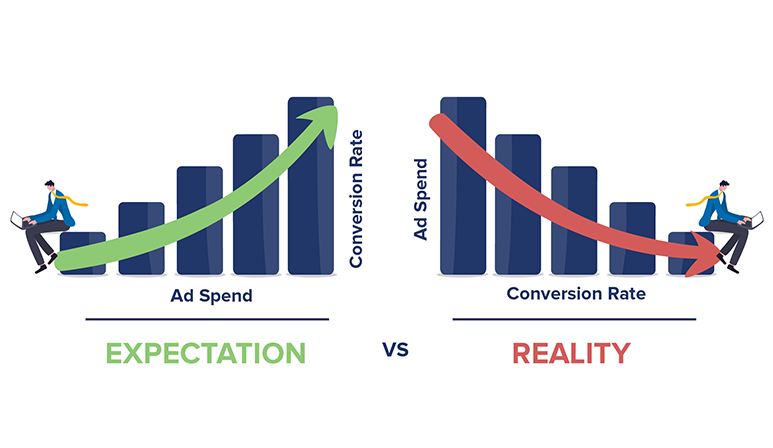
Recent Conversion Logix data showed that while predictive ads could improve click-through rates, the conversion rates (lead-to-lease) weren’t significantly better compared to more straightforward advertising methods.
Predictive Ads Struggle With Accuracy
One of the significant flaws with predictive ads is their reliance on historical data to forecast future behavior. Companies without access to substantial, high-quality data sets may find it challenging to create accurate predictive models.
“A primary challenge for multifamily and real estate marketers in predictive advertising is navigating its complex processes,” said Zach Shepard, principal at Braddock Investment Group Inc. “It involves collecting large amounts of data from multiple sources, analyzing it accurately, and using it to make predictions about potential customers or tenants. This can be a daunting task for those who are not familiar with data analysis and predictive modeling.”
Shepard believes many marketers may lack the necessary tools or resources to implement a successful campaign, which could result in inaccurate predictions or an ineffective strategy that does not yield the desired results.
“In some cases, the negative experience with predictive advertising may stem from unrealistic expectations,” said Shepard. “Marketers may expect immediate and drastic improvements in their marketing efforts without considering the time and effort required to collect and analyze data for accurate predictions.”
Even when sufficient data is available, predictive algorithms often overlook critical variables such as weather changes, shifting moods, or personal relationships — factors that can dramatically influence purchasing decisions in ways that a computer cannot easily anticipate.
“One of the primary issues that marketers face with predictive advertising is inaccurate targeting,” said Robert Fausette, owner of Revival Homebuyer. “Predictive algorithms use data analysis to predict which individuals are most likely to take a certain action, such as clicking on an ad or making a purchase. However, this data is not always accurate and can lead to targeting the wrong audience. This results in wasted advertising budget and lower conversion rates.”
Multifamily Executive reported that renter behavior can be highly volatile, especially in uncertain economic times, making predictive analytics less effective. Renters’ priorities shift based on changing market conditions, economic factors, and personal circumstances that predictive algorithms struggle to account for.
Additionally, predictive models are not static and must be updated continuously to remain relevant. As customer behavior evolves, a model that once worked may quickly become obsolete, leading to inaccurate predictions and wasted ad spend. A perfect example is the 2008 financial crisis, where models predicted mortgage customers would repay loans but failed to account for the collapse in U.S. housing prices.
“Our biggest challenge was getting good leads that actually turn into customers,” said Dino DiNenna, real estate broker at Hilton Head Realty Sales. “We tried a big ad campaign for our fancy apartments, and while lots of people clicked, not many ended up applying. It was frustrating to see all those clicks but so few real leads.”
In multifamily marketing, relying too heavily on outdated models can result in poor targeting, ineffective ad spend, and ultimately, lower ROI. While predictive advertising offers potential, its limitations make it less reliable compared to real-time data-driven approaches that adapt to renters’ immediate needs and behaviors.
In contrast, real-time data like live pricing updates and real-time availability are far more accurate because they reflect the current state of the market. BestEverCRE found that renters are more likely to convert when presented with up-to-date, transparent information such as pricing, unit availability, and immediate offers. This real-time approach provides actionable data, allowing for a more direct path to conversion without relying on speculative forecasts.

The Case for Simplicity: Live Pricing and Availability
One of the most compelling arguments against predictive ads is the simplicity and effectiveness of using real-time data. MultifamilyBiz highlighted that real-time availability and pricing updates directly impact conversion rates because they offer renters the information they need when needed.
By focusing on strategies that prioritize transparency — like showing what units are available right now or offering dynamic pricing — you create a more immediate sense of urgency and trust. Renters are far more likely to act when they know exactly what’s available, at what price, and when they can move in.
Ashley Gawley LRE, founder at Launch Real Estate, advises balancing data with understanding the hyperlocal market, property, and target audience. “For multifamily, look at lease-up rates, turnover, and demand for specific unit types — not just broad demographics,” Gawley said. “Consider hosting focus groups to gain qualitative insights into what’s really driving people’s housing decisions.”
Michael Yerardi, owner of Turning Point Home Buyers also faced challenges with predictive ads when the qds were not matching up with how residents felt about living at the properties. “We listened to what our residents had to say and made big changes,” Yerardi said. “For example, we promised to fix things within 24 hours, which made people much happier. By focusing on making life better for our residents — not just on flashy ads — we got 20% more people to stay with us.”
At Criterion.B, we’ve seen firsthand that simpler methods can outperform more complex, algorithm-based systems like predictive ads. Instead of trying to guess what renters might want in the future, we focus on delivering relevant, real-time information that speaks directly to their current needs.
The Fallacy of Predictability
Predictive advertising often promises that with enough data, marketers can forecast consumer behavior with precision. However, this is where the fallacy of predictability comes into play.

The desire for predictability can lead brands to rely on data and past performance to the point of stifling creativity and innovation. While predictive tools analyze everything from location to preferences, purchases, and search history, they ultimately fail to account for the messiness of human behavior. They can’t account for the emotional and personal factors influencing renter behavior.
Advertising has never been an exact science, nor should it aim to be. The idea that past consumer actions can reliably predict future behavior is flawed, and companies relying too heavily on predictive analytics will likely experience diminishing returns. Past performance does not predict future results. The repetition of predictable tactics inevitably leads to stagnation.
While data can provide insights, the art of advertising lies in its ability to engage, surprise, and break through the ordinary. It’s not about being predictable but about showing up in unexpected places and finding the human connection that resonates with people on a deeper level. Effective advertising is about understanding human behavior — not just the data sets it generates — and creating campaigns that reflect society’s complex, ever-changing nature.
Brands that rely solely on predictive ads risk becoming part of the ignorable 85% of ads that go unnoticed. By rejecting the predictable and embracing creativity, companies can produce advertising that stands out, breaks norms, and becomes part of the cultural conversation.
“We invested in a campaign aimed at prospective renters based on data analytics, but the audience we reached often didn’t align with our ideal tenant profile,” said Justin Landis, founder of The Justin Landis Group. “Many of the leads we received were unqualified, leading to a low conversion rate and wasted marketing dollars. We also faced challenges with the technology itself. The predictive models sometimes failed to account for local market nuances, resulting in ads that felt generic and disconnected from our community’s needs. This misalignment made the campaign feel less personal, and potential renters often overlooked our offerings.”
“The negative experience was frustrating, as we had high hopes for improving our lead generation,” Landis continued. “To pivot, we shifted our focus from purely data-driven advertising to a more integrated approach that included community engagement and personalized messaging. We began leveraging social media to connect with potential renters directly and gather feedback.” This approach enhanced the brand image of The Justin Landis Group. It allowed the company to tailor its offerings to meet audience needs better, ultimately leading to more successful marketing outcomes.
In the multifamily space, where renters’ needs and expectations evolve quickly, it’s essential to stay agile. Predictive ads, with their focus on past data, can leave marketers blind to new opportunities or shifts in renter behavior. Instead of leaning on predictive analytics, focusing on live data, real-time updates, and human-driven insights will allow brands to remain relevant and adaptable in a constantly changing market.
“We learned the hard way that keeping up with what residents want is crucial,” said Nick Stoddard, CEO at KC Property Connection. “We once ran ads aimed at young professionals, but it flopped because we didn’t consider families looking for bigger homes. After tweaking our approach to include families, we saw a big jump in leads and a 15% increase in occupancy rates. This experience taught us that regularly updating our marketing strategies is key to staying on top of changing resident needs.”
The Human Element: Why Predictive Ads Miss the Mark
While artificial intelligence (AI) is growing in digital marketing, its use in long-form content and predictive advertising isn’t without challenges. AI tools used in predictive analytics often simplify complex behaviors into data points, missing out on the nuances of human decision-making.

AI-driven predictive ads are not always effective in capturing the attention of renters seeking personalized experiences. Renters prefer authentic and relevant brands, which AI-driven, predictive models often struggle to achieve. Psychology Today reported that 70% of consumers spend more with authentic brands.
“The overreliance on AI in predictive advertising presents a challenge for us,” said Ryan Whitcher, founder and CEO of Harmony Home Buyers. “We initially embraced AI for our ad campaigns but soon realized it led to biased targeting and a 30% drop in qualified leads over three months. To address this, we implemented a hybrid approach, combining AI with human oversight, resulting in a 25% increase in qualified leads within two months and teaching us the importance of balancing technology with human expertise in our marketing strategies.”
Although 77% of advertisers have a favorable opinion of AI, consumer sentiment tells a different story. A 2024 report from the Edelman Trust Institute revealed that trust in AI among U.S. consumers has dropped by 15% over the past five years, declining from 50% to just 35%.
Also, a recent Neil Patel study found that content marketing incorporating personalization and emotional engagement outperforms data-driven, predictive ad strategies by 94.12%. Renters want to feel connected to the brand they’re considering, and predictive ads often fail to create that connection.
At Criterion.B, we prioritize building trust and emotional engagement through tailored content, real-time updates, and personal interactions. This approach builds lasting relationships, which is something predictive ads can’t do.
Why We Don’t Offer Predictive Ads
At Criterion.B, we’ve done our research. While predictive advertising may have its place in certain industries, the multifamily market demands a more dynamic, real-time approach. The unpredictable nature of renter behavior — combined with the increasing need for transparency and trust — means that predictive ads often fall short.
Rather than relying on speculative technology, we focus on proven methods: real-time pricing, availability updates, tailored content, and building genuine connections with renters. This approach doesn’t just drive traffic — it builds relationships. So while the allure of predictive ads is tempting, we’re committed to more personable (and reliable) strategies.

Is Social Media Marketing Worth It? Let’s Break Down the Numbers
Social media marketing: Everyone’s doing it, and the promise of a massive, engaged audience for “free” is hard to resist.
But hold on a second.
Before you jump into the endless vortex of posting and follower chasing, consider this: recent studies show that organic social media delivers the lowest return on investment compared to other marketing channels.
Ouch. That can sting.
However, before you write off social media entirely, here’s the good news: social media marketing can be a powerful tool for driving engagement and brand awareness (which ultimately leads to authority, thought leadership, website traffic, and even conversions). The key is understanding its strengths and weaknesses and how to leverage it strategically.
The allure of social media for business is undeniable. Endless scrolling, instant gratification, and the promise of reaching millions — it’s a tempting cocktail. But is more always better?
For years, the mantra was “post more, engage more.” But the reality is, the social media landscape has evolved. Audiences are savvier, attention spans are shorter, and algorithms are smarter. Now, it’s about strategic, high-quality content that truly resonates.
Why Tracking Social Media Success Can Feel Like Counting Raindrops
Let’s be honest, proving the value of social media marketing to upper management can feel like trying to quantify the weight of a cloud.
While platforms promise massive reach, 52% of organizations struggle to measure their impact. Unlike traditional advertising with clear metrics, social media’s influence often feels intangible. A witty tweet might go viral, generating tons of engagement, but did it translate into dollars and cents?
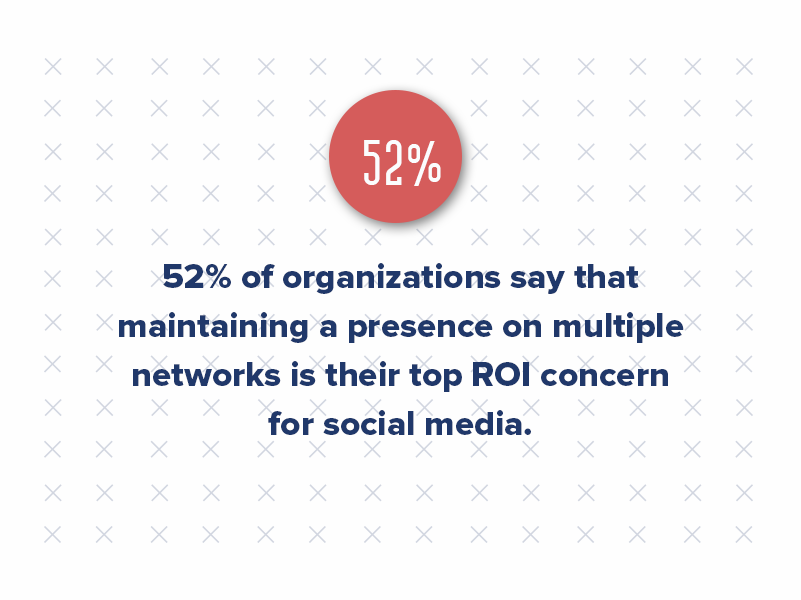
The tricky part is that social media marketing often lays the groundwork for later conversions in the marketing funnel. Someone might see your informative blog post about a common industry problem, “like” your page, and then months later, when they’re ready to tackle that problem, remember your company and visit your website for a solution.
It’s a subtle influence, not a direct conversion machine.
Why You Still Need Social Media Marketing (Even If It’s Hard to Track)
Despite the tracking challenges, social media marketing offers several invaluable benefits that contribute to your overall marketing strategy, even if they aren’t directly reflected in a sales report:
- Brand Awareness & Visibility: Social media platforms put your brand directly in front of a massive audience, keeping you top-of-mind and fostering brand recognition. It’s like having a constant, low-key billboard reminding people you exist.
- Building Relationships: Social media allows for two-way communication, the holy grail of marketing! Respond to comments, answer questions, and engage with your audience in real time. This builds trust and loyalty, turning fleeting followers into brand advocates.
- Market Research & Customer Insights: Social listening allows you to eavesdrop on the online world, seeing what people are saying about your brand, industry trends, and competitor activity. This invaluable intelligence can inform your marketing strategy and help you stay ahead of the curve.
- Community Building: Create a vibrant online community where customers can connect, share experiences, and feel a sense of belonging. This fosters brand loyalty and positive word-of-mouth marketing — essentially, free advertising from your happy customers!
Beyond the Likes
Despite the challenges in quantifying social media ROI, it still remains a critical component of any successful marketing strategy. Why?
Consider this: a staggering 94.6% of internet users between 16 and 64 years old visited a social network site in the last month. This massive audience represents a goldmine of potential customers.
While social media might not always yield direct sales figures, it’s where discovery happens. A full 44% of Gen Zers and 33% of millennials primarily gather product information through social channels. This means social media is often the first touchpoint for many consumers, influencing their purchasing decisions.
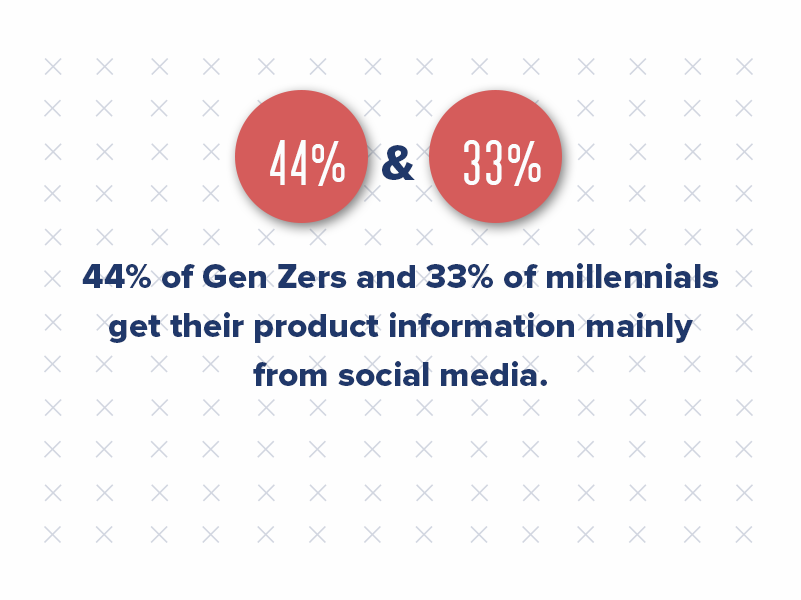
Additionally, 90% of marketers now recognize the importance of social search optimization, underscoring the platform’s role in the overall customer journey.
Prioritizing Quality Over Quantity
The era of shotgun social media marketing is over. Companies are realizing that spreading resources thin across multiple platforms isn’t always the most effective strategy. There’s a growing shift towards focusing on a few key channels where they can truly excel.
Platforms like Twitter have seen a decline in brand usage as companies prioritize social media ROI. The future lies in mastering a select group of platforms, delivering exceptional content, and measuring impact closely.
So how do we bridge the social media ROI gap?
- Set SMART Goals: Don’t just aim for “more followers.” Define Specific, Measurable, Achievable, Relevant, and Time-bound goals that align with your overall marketing objectives. Focus on metrics like website traffic, lead generation, or brand sentiment. These will be your guiding lights to measure success.
- Targeted Content: Don’t be a social media spammer. Create high-quality, engaging content that resonates with your ideal customer. Tailor your content to the specific platform, understand what your audience wants, and provide them with valuable information or entertainment. Social is best for building brand equity, which takes time. Don’t revert to your old, self-promotion-y ways either. No one likes a hard sell, and letting them flock to you will be so much more effective in the long run.
- Paid Advertising: Consider strategically using paid social media advertising to reach a wider audience and target specific demographics with a laser focus. Paid ads can be a powerful tool to promote valuable content offers, webinars, or drive traffic to key landing pages.
- Track & Analyze: Metrics like website traffic, lead generation, and social media engagement paint a picture of your social media’s impact, even if you can’t directly attribute every sale to a specific tweet. Use analytics tools to understand what’s working and what’s not, and constantly refine your approach. Run experiments with new content types or tone of voice. Once you see results, start tweaking future posts and keep testing and iterating as you go.
- Be Consistent: Regular posting keeps your brand on mind and builds your content’s anticipation.
To truly capture attention, brands must shift their focus from quantity to quality. Social media should be an interactive space where value exchange is a two-way street. crafting content that informs, inspires, or simply brings a smile to faces, businesses can foster genuine connections with their audience. It’s not just about promoting products or services; it’s about offering value and becoming part of the conversation. Remember, social media is a two-way street. By listening to your audience and responding authentically, you can build trust and loyalty that translates into long-term business success.
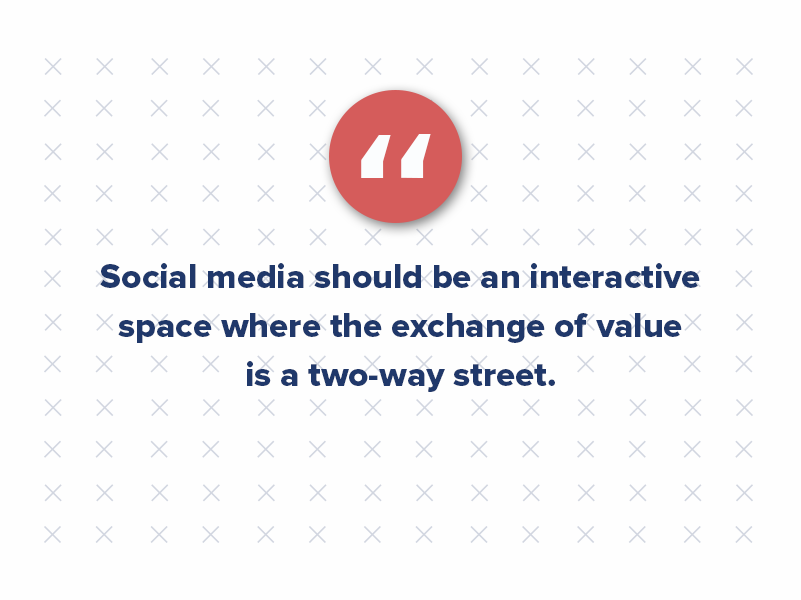
Making Social Media ROI Work for You
Social media success requires a strategic approach, not random posting. It’s like having a secret weapon in your marketing arsenal — one that fosters brand loyalty, fuels word-of-mouth marketing, and positions you as a thought leader in your industry.
Ready to unlock social media marketing’s true potential? Contact us today for a free consultation and learn how we can help you develop a winning social media strategy that aligns with your business goals.
4 Tips to Get the Most Out of Your Social Media Strategy
Hands down, one of our client’s most significant pain points is developing and sticking to a consistent social media strategy.
How does one navigate the intricate maze of Instagram’s ad-friendly ecosystem or TikTok’s transformative brand narratives? As the multifamily sector stands on the cusp of this digital revolution, it’s not just about joining the trend. It’s about discerning where social media truly fits within the grand tapestry of multifamily marketing strategies.
A robust online presence pushes visitors to the company’s website, where vital, static information helps clinch deals. But remember, the essence of social media isn’t mere presence — it’s meaningful interaction and engagement.
Let’s take an aerial view to examine where social media sits within a broader multifamily marketing strategy.

1. Setting goals and KPIs.
Never before have businesses had such direct and interactive communication with their target audience. This two-way conversation offers insights and feedback in real time. Imagine how valuable billboards would be if they could actively respond to questions from inquisitive prospects!
By setting clear goals, whether it’s boosting brand awareness or establishing thought leadership, businesses can create purpose-driven relationships. The starting point should always be defining business goals and setting measurable KPIs.
2. Create content that compels engagement.
Once goals are set, every piece of content should have a clear intent and desired outcome. The challenge is to craft content that stops users mid-scroll and compels them to engage. This could be a captivating image, an intriguing blog headline, or an innovative video. Marketers must also ensure a consistent brand experience across all platforms. After all, user experience should remain consistent, whether a resident interacts with your brand online or on-premises.
Moreover, audience engagement provides insights into content strength, guiding businesses to optimize their sales or awareness funnels.
3. Leveraging ads for greater reach.
With a clear understanding of social media’s role in customer journeys, marketers can amplify their reach cost-effectively. While many flock to Google PPC, platforms like Facebook offer budget-friendly solutions. Though it might cater to a niche audience, the lead quality remains high. Mastering social media advertising involves meticulous A/B testing to optimize ads, from selecting visuals to refining copy. But once you find what clicks, the results can be astounding.
Harnessing Social Media: 4 Best Practices to Optimize Results
Many businesses struggle with maintaining a consistent and effective social media strategy. Here are some actionable tips to optimize your online multifamily marketing efforts:
1. Embrace Content Calendars
While it can be difficult to draft a content calendar for the first time, it proves immensely beneficial for your social media strategy in the long term. Content calendars keep your publishing schedule organized and prevent you from missing any important dates.
Organize your posting schedule by planning content in advance. Using tools like Google’s collaborative platforms helps streamline team communication, ensuring timely and diverse content publication.
Remember to plan as your business and surrounding area evolve. These posts can all be added to your content calendar in advance so that you can plan out your days to ensure nothing overlaps, you aren’t over-promoting your business, and you are diversifying your content appropriately.
2. Follow the 20/80 Rule
Regardless of the platform, social media is not a microphone for self-promotion. While it’s tempting to blast your latest offers, promotions, and new amenities across each channel, this “interruptive” promotion is not always effective. There’s a time and a place for promotional content, and that time accounts for about 20% of your feed.
Overall, 20% of your shared content should focus on you, while the remaining 80% should be about your audience and what interests them. Take this 80% opportunity to be a resource, a thought leader, and a value-add for your customers.
At Criterion.B, we refer to this rule as the “cocktail party methodology.” When you arrive at a cocktail party, what do you do? Most people walk up to a small group of people and ask about them: their names, their work, and where they live. You ask follow-up questions to get to know them and seek common interests.
With time, the conversation turns back to you, allowing you to share about yourself. Interrupting the current conversations and talking about yourself first would be rude. This is how social media works, too — it’s a conversation.

3. Pin Posts to Your Feed
Did you know you can pin important posts to the top of your feed? From your latest press release announcing a new product line to a fun giveaway promoting your participation at an upcoming trade show, there are plenty of opportunities to highlight important social posts.
Pinning posts to your feed is a simple three-step process:
- Go to your Facebook or X (Twitter) newsfeed and find the post you want to pin.
- Click the down arrow in the corner of your post.
- Select “Pin to Top.”
Pinning an important post can extend your reach, potentially attracting more engagement and interest. Don’t forget to “unpin” your post after three to four days to prevent ad fatigue. These reminders can be part of your content calendar.
4. Take Advantage of Influencer Marketing
From reviews to thought leadership, social media offers a unique outlet to turn fans into influencers. Influencers are recognized by their large following and insights covering all aspects of your respective market. A strong social presence is necessary to hold an influencer status and quality posts that engage followers actively. Often, influencers are viewed as a more trustworthy resource than advertisers, thus better capturing your audience.
Connecting with these influencers allows you to market your business simply by becoming visible through their followers. Rather than spending large marketing dollars on print ads, influencer outreach is free or significantly cheaper. Consider allowing an influencer to guest blog on your site, for example, or have them take over one of your channels daily to motivate your followers to engage.
Social media offers boundless opportunities for multifamily marketers. However, the key lies in integrating it effectively into a broader strategy, ensuring that every post, ad, and interaction aligns with the brand’s goals and resonates with the target audience.

Diving Into Your Property’s Facebook Ad Audience and Ad Types
We all know Facebook ads can significantly boost your property’s visibility, but navigating how to use Facebook ads manager and successfully launch ads is another story.
If your Facebook ads are not delivering as expected, it might be time to revisit the fundamentals.
Understanding Your Audience: Laying the Foundation
The bedrock of a successful Facebook ad campaign is reaching the right people. If apartment reviews are favorable, the last thing you’d want is for potential residents to miss them. Hence, understanding and creating a renter persona is paramount.
This persona, representing your ideal renter, can guide your targeting. For a multifamily marketing perspective, use our multifamily persona worksheet to help shape this persona.
You can access the “Audiences” section when navigating Facebook’s business tools. Here, Facebook allows you to create various audience types for your multifamily marketing ads, including:
- Custom Audiences: Focuses on those already familiar with your property, like website visitors. This audience is excellent for retargeting, creating those essential touchpoints to convert leads.
- Lookalike Audiences: Targets individuals similar to your existing residents. This model lets Facebook identify and target users who share attributes with your defined custom audience.
- Saved Audiences: Curated based on demographics and interests. While versatile, multifamily marketers must be wary of targeting restrictions due to housing regulations.
- Special Category Audiences: Specific to businesses in Special Ad Categories like housing. These audiences have distinct limitations, so be sure you’re compliant.
Understanding these audiences can aid in creating targeted multifamily marketing campaigns that resonate, especially when seeking to highlight positive apartment reviews.
Diving Into Ad Types: Crafting the Perfect Message
Determining the ad type is pivotal when deploying Facebook marketing for property management. Facebook offers several ad objectives, and then you can choose the ad format within those.
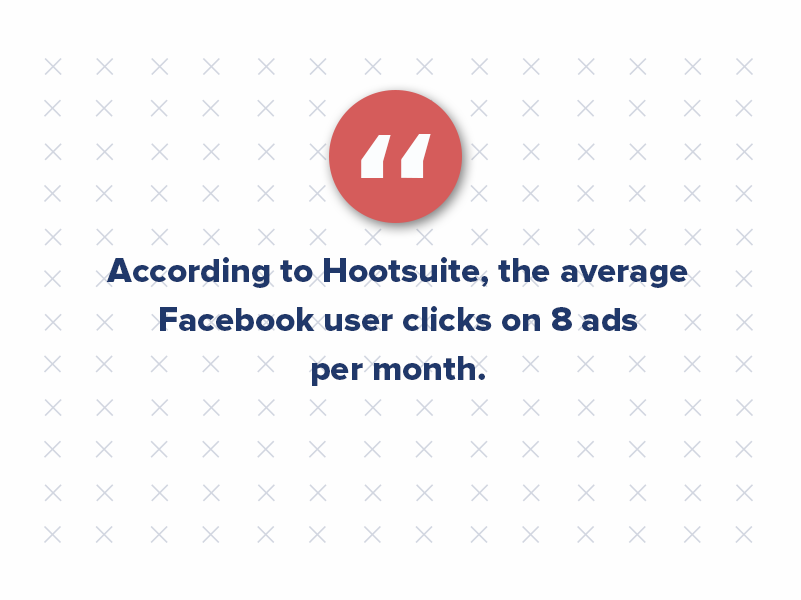
Ad Objectives
- Awareness: This is your chance to make a first impression. Use this objective when you’re aiming to put your property on the radar of potential residents. Think of it as your digital elevator pitch — succinct, compelling, and memorable. Perfect for showcasing the exterior of your property, community amenities, or even the surrounding neighborhood to entice potential residents.
- Consideration: Now that your audience is familiar with your property, it’s time to deepen that relationship. Engage those who have shown preliminary interest in your property but are still unsure about committing. Share content that paints a holistic picture of life at your property — perhaps a virtual tour, resident testimonials, or spotlighting features that make your property unique. Highlighting apartment reviews during this phase can be particularly effective, giving prospects a peer-based perspective on the resident experience.
- Conversion: This is the closing phase. Here, your objective is clear and direct action. Whether it’s encouraging potential residents to schedule a property tour, sign up for a newsletter, or even start leasing. The ads in this phase should be crafted with a strong call to action, directing the audience exactly where you want them to go. Offer incentives, showcase limited-time deals, or emphasize the urgency to act.
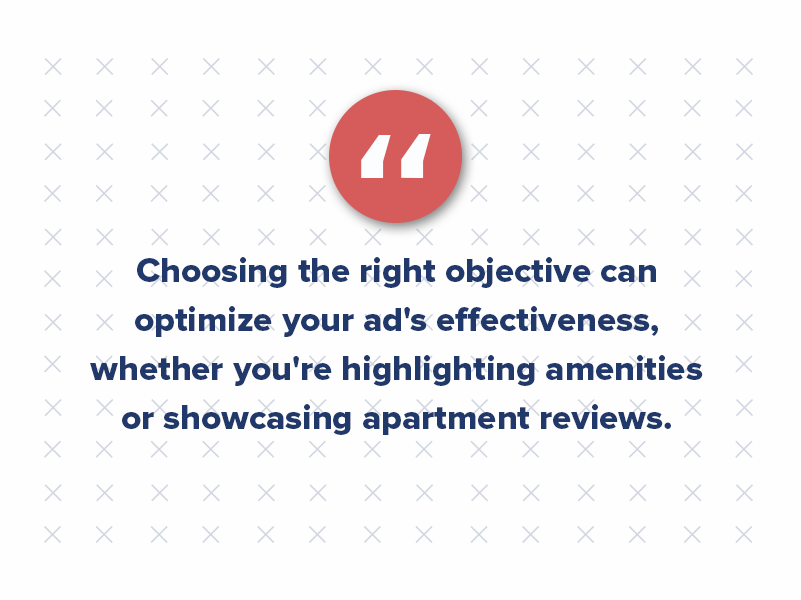
Choosing the right objective can optimize your ad’s effectiveness, whether you’re highlighting amenities or showcasing glowing apartment reviews. These categories are basically the three main stages of any marketing funnel, and it is the first selection you make when creating a new ad campaign. Once you choose, every ad you launch within that specific campaign has that same objective.
Now, within each Ad Objective, there are multiple options from which you can choose to optimize ad delivery. These options slightly change the way your ad looks to viewers.
For the Awareness Objective, you have Brand Awareness and Reach. These objectives are designed to show your ad to the largest number of people in your target audience within your budget.
For consideration, there are:
- Traffic
- Engagement
- App Installs
- Video Views
- Lead Generation
- Messages
These optimize your ad for a specific action step, such as visiting your website, watching a video, filling out a form, or sending your property a message.
Lastly, there are Conversions, Catalog Sales, and Store Traffic for the Conversion Objective. However, you might find that these options don’t really line up with your goals.
Based on our experience with multifamily ads, you can easily create conversions with the Consideration ad objectives. Traffic and Lead Generation are the top two ad objectives you will use and find successful.
Overall, don’t get too caught up in the minute details of each category; just choose the one that best matches the action you want a prospect to take when they see your ad.
Ad Formats
Now that we’ve covered all the ad objectives let’s talk about ad formats, which dictate how your ad will appear.
- Image Ads: Simple, straightforward, and ideal for quick, clear messages. For multifamily properties, these can highlight specific amenities or limited-time leasing offers. You can upload three different ad sizes for each image ad: Facebook News Feed, Instagram Feed, and Instagram Story.
- Facebook News Feed ad specs are 1080 x 628 pixels.
- Instagram Feed ad specs are 1080 x 1080 pixels.
- Story ad specs are 1080 x 1920 pixels.
- Video Ads: Engaging and dynamic, offering a chance to tell a more detailed story. Whether showcasing a resident testimonial or a property walkthrough, videos can enhance the resident experience. You can have a video ad running in these three sizes:
- Horizontal Video Ads should be 600 x 315 pixels.
- Square Ads should be 600 x 600 pixels.
- Story Ads should be 1080 x 1920 pixels. It’s also important to know that Story Ads can only be 15 seconds long max.
- Carousel Ads: Interactive ads allow viewers to swipe through multiple images. Perfect for showing various unit types or amenities. There is only one ad size available for this type: a 1:1 ratio with 1080 x 1080 pixels.
The correct mix of ad objective and format can differentiate between an ad that resonates and one that falls flat. And with the potential for driving down costs (like achieving link clicks for as little as 22 cents), it’s worth the effort to get it right.
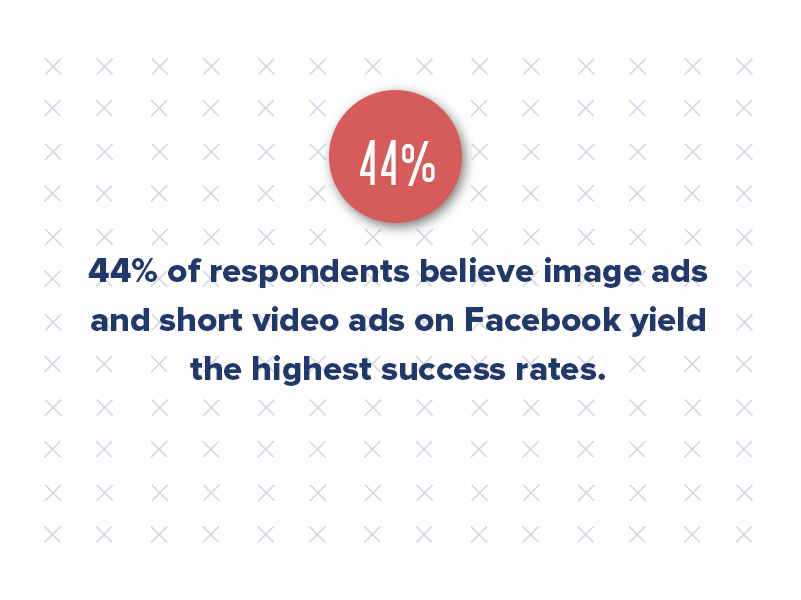
Launching Your Ad: The Culmination
Once your audience is set, and your ad type is chosen, it’s time to launch. Integrating the strategies highlighted above — especially with the support of Facebook marketing agencies — can ensure your ad reaches potential residents and resonates with them. Aim to highlight positive apartment reviews, emphasize the quality of resident experience, and use effective multifamily marketing techniques.
Whether you’re just getting started or seeking to optimize your existing efforts, understanding these fundamentals is the first step toward Facebook marketing success. If ever in doubt, remember that many Facebook marketing agencies like Criterion.B specialize in multifamily marketing and can offer tailored guidance and support.
Proven Multifamily Social Media Marketing Strategies to Increase Engagement
Social media’s influence is profound and pervasive, with over 4 billion global users engaging on multiple platforms monthly, dedicating more than two hours daily to these platforms.
For multifamily property owners, this translates to a vast, often cost-effective marketing landscape teeming with potential. Creating a social media strategy can amplify a property’s digital footprint, heighten engagement, and elevate multifamily brand recognition.
Are you aiming for heightened visibility or superior leads? Here’s the inside scoop, including ways to maximize your reach with multifamily social media marketing:
1. Choose the right multifamily social media marketing platforms.
Determining the optimal social platforms for your needs is crucial. While there’s a plethora to pick from — from Facebook, Instagram, and TikTok to Snapchat and X (formerly Twitter) — it’s essential to discern which is most frequented by your target demographic.
Both Facebook and Instagram reign supreme in terms of performance, yet TikTok is swiftly gaining traction, especially if you’re targeting the Gen Z segment.
Not to be overlooked, TikTok also holds appeal for millennials. Comscore data reveals that close to 30% of TikTok enthusiasts are aged between 20-29, and another 16.4% fall within the 30-39 age bracket.
Your overarching multifamily marketing strategy should guide your platform choices. For instance, if your focus is on running tailored social advertisements, Facebook stands out. Conversely, if you aim to diversify your property’s follower base, Instagram boasts features tailored for audience expansion.
While businesses often encounter a pay-to-play model on Facebook, it’s an excellent platform for promoting posts and rolling out social ads. Meanwhile, Instagram offers tools designed to introduce your property to new eyes and amplify brand visibility.
LinkedIn also stands out as a prime channel for multifamily vendors. Given its professional and formal tone, LinkedIn reaches the precise audience — property managers, real estate professionals, and potential partners. Before diving into other niche platforms, it’s strategic to tap into the robust network that your target audience already frequents.
2. Engage with your audience; don’t just promote.
When deciding what content to post on your channels, always consider what your audience would find interesting. Social media is not a microphone for self-promotion but a chance to connect with your audience.
While it’s tempting to showcase your products or services constantly, it’s crucial to prioritize engagement over sheer promotion. Your content should resonate with property managers, residents, and potential partners. Balance your feed with valuable original content, like how-to guides or industry insights, and share valuable articles or insights. Always prioritize your audience’s interests and subtly integrate how your offerings can solve their needs. Think about your audience first and piece in how you fit into the conversation second.
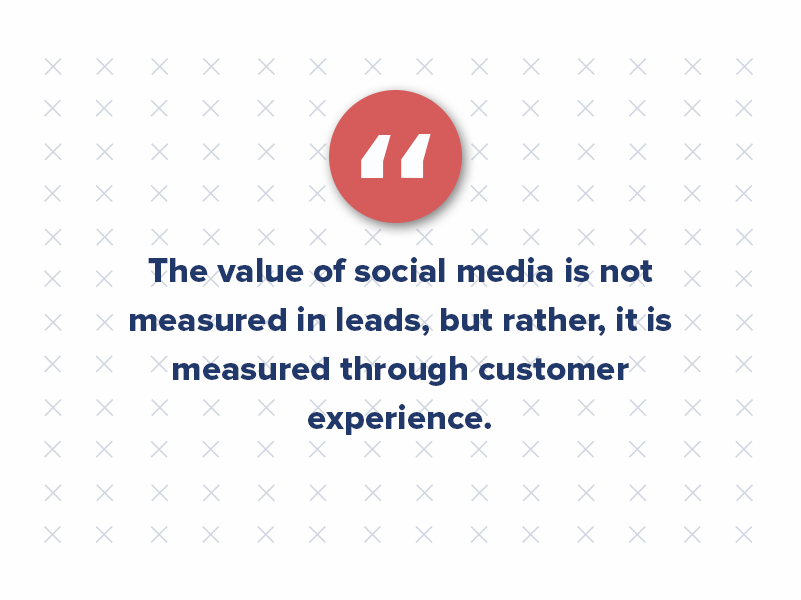
3. Narrate your multifamily brand journey.
Every multifamily vendor boasts a distinct narrative — encompassing its genesis, evolution, and the principles it champions. Embarking on a journey to create a social media platform dedicated to such storytelling can be invaluable. To maximize your social media presence, select the most suitable social media channels tailored for your target audience.
When crafting social media posts, consider profiling elated property managers who have reaped the rewards of your services. Such testimonials act as authentic endorsements, solidifying the trust of social media users in your offerings. Additionally, providing a sneak peek behind the curtains — showcasing the day-to-day operations of your business — can foster genuine connections. As property owners and small businesses scroll through their preferred social network, such posts can resonate deeply, increasing brand awareness.
Furthermore, celebrate every milestone, whether it’s the 100th property you’ve worked with or the 10th year of your operation. Sharing these achievements on various platforms can significantly boost traffic to your website.
4. Share and promote your blogs on social.
For social media managers at the helm, it’s essential to discern the content that aligns with the essence of the multifamily property. This ensures that the marketing campaigns rolled out resonate with the audience in real-time.
Incorporating blog posts related to the multifamily industry, insights, or even tips for property managers can become an integral part of your multifamily social media marketing plan. It provides value to your audience, and such posts can generate leads.
Lastly, actively monitor the leads generated from these endeavors. Track and measure the effectiveness of each campaign, adjusting strategies accordingly. This proactive approach ensures your brand remains agile and attuned to the ever-evolving digital landscape.
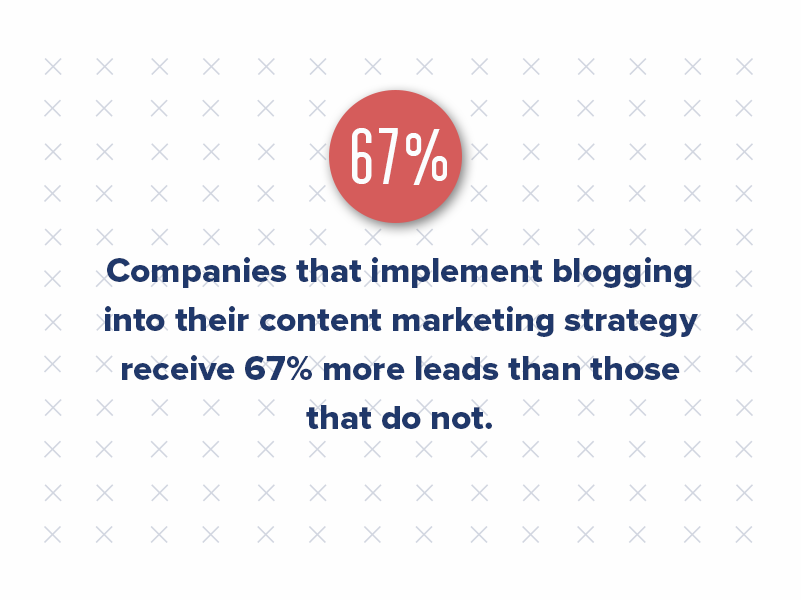
5. Focus on the imagery.
In today’s digital landscape, most leading social platforms place a premium on visuals. The logic is simple: the more visually captivating a post, the more shares it garners, subsequently reaching a broader audience.
With this in mind, it’s essential to prioritize high-quality imagery. Opt for striking and locally relevant photos that narrate your brand’s narrative and resonate with your desired clientele. Remember, the foundation of exceptional content is exceptional photography.
6. Diversify your content and use more videos.
While photography is still essential, you shouldn’t overlook the power of dynamic video content. Engaging and high-quality videos have become pivotal in modern digital marketing. According to a Wyzowl study, 84% of marketers leveraging video content reported lead generation, while 78% credit their sales growth to it.
Visual aids make your feed more enticing and improve information retention. A monotonous feed can lead to reduced engagement. Intersperse your content with vibrant images, videos, infographics, and other visual content.
Brands should particularly focus on crafting videos for Instagram Stories, Instagram Reels, and TikTok. The usage of Instagram stories by major brands has grown substantially, doubling in just the past year. Instagram Reels have also experienced significant traction.
An added advantage? Reels can seamlessly be adapted and shared on TikTok. This platform became the first non-Facebook app to achieve 3 billion global downloads, making it one of the most sought-after social platforms currently.
7. Expand your reach strategically.
Social media can also be an excellent outlet for paid advertising. Surveys show that nearly half of all social users say they’ve bought something after seeing it advertised on social.
Once you’ve established a consistent and engaging content strategy, explore the advertising features of platforms like Facebook and LinkedIn. These platforms offer laser-focused targeting, ensuring your content reaches the right eyes. You can target specific locations, demographics, and even users with particular interests, backgrounds, and career fields on platforms like Facebook and Instagram. For instance, a post detailing the benefits of a specific service for property managers can be targeted precisely at that demographic.
Incorporating these strategies can transform social media from just another marketing channel to a dynamic platform that fosters connections, enhances brand visibility, and drives tangible results for multifamily vendors.
Paid advertising provides an opportunity to market to your target audience directly. It’s important to test, test, and test again — on every element of your ads.

8. Tap into user-generated content.
Producing all your content in-house isn’t a necessity. Often, content created by your users or followers, known as user-generated content (UGC), can be as impactful as the content you create, if not more. UGC can encompass anything from posts and photos that mention your property to online reviews and other social content shared by individuals beyond your team.
Given a choice between official brand messages and genuine customer reviews, consumers consistently lean toward the latter’s authenticity. The reality is that many consumers place more trust in fellow consumers than in brands themselves. Thus, it’s a strategic move to integrate UGC into your promotional strategy.
Another avenue to explore is influencer marketing. This approach involves partnering with well-established social media figures to advocate for your brand. It’s crucial, however, to select influencers whose followers resonate with your target audience and be prepared for the associated costs.
Begin Your Multifamily Social Media Marketing Journey
Ultimately, multiple paths lead to success in multifamily social media marketing. Defining your objectives, deeply understanding your desired audience, and springing into action are essential.
Recognizing your core audience and discerning what appeals to them on social platforms is fundamental to a campaign’s triumph. Once you’ve done that, charting a strategy concerning content type, its regularity, and its origins becomes paramount. Ultimately, analyzing outcomes and making necessary tweaks is the finishing touch to a winning strategy.
The Rise and Importance of Video Marketing in Your Multifamily Marketing
Reflect on the most engaging content you’ve encountered on social media lately. Which pieces left a lasting impression, prompting you to share or tag a friend?
The undeniable force behind these memorable moments is video content. Whether it’s an amusing pet mishap, an informative tutorial, or an innovative DIY project, videos have an unrivaled power to captivate.
U.S. adults, on average, dedicate six hours daily to watching videos, and this watch time has skyrocketed by over 270% in the past year. Research indicates that more than half (54%) of consumers want to view more video content from their favored brands or businesses. Remarkably, 86% of companies now leverage video for marketing, a significant jump from 63% a few years ago.
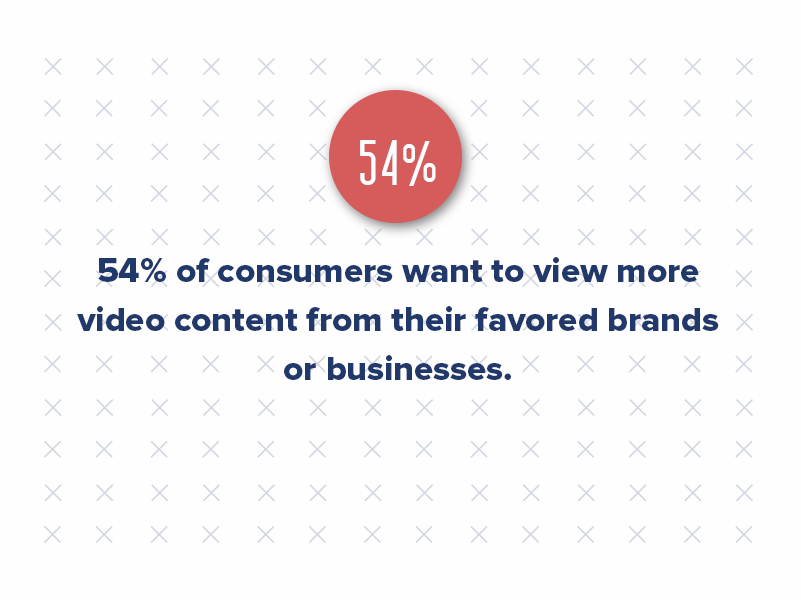
These striking statistics underscore the substantial potential of video content marketing, especially in the multifamily marketing landscape. Now is the perfect moment if you haven’t yet integrated a robust video marketing strategy.
Why Is Video Content Marketing Important?
Search engines love fresh and engaging content, and nothing fits the bill quite like creating videos. In today’s digital age, landing pages, blog posts, and other online spaces are instantly elevated when you include video. The type of video matters, too. For instance, an “explainer video” can help break down complex concepts, while a product video shines a spotlight on the unique features of your products and services.
With many video and social media platforms available, there’s never been a better time to experiment with video ads, live videos, and other video formats.

In our fast-paced digital world, consumers search for content that offers instant gratification. Videos perfectly meet this demand, enabling brands to encapsulate their core message in a short yet impactful format. When you add video to your marketing mix, it’s not just about visuals; it’s about building genuine relationships with your audience.
The art of promoting your video has also become more accessible and budget-friendly, thanks to evolving technology. Now, multifamily marketers can benefit from precise targeting on video platforms and receive in-depth analytics, making it an indispensable marketing tool. Plus, with the option to share videos widely, you increase the chances for potential customers to watch your video and connect with your brand.
Effective Content for Your Video Marketing Strategy
Understanding and integrating the importance of video within your multifamily marketing framework is crucial, but it’s just the beginning. Determining which video formats and styles align best with your business objectives can be challenging.
To navigate this landscape, here are some video marketing tips to optimize your strategy for the multifamily sector:
1. Live Streaming and Reels
Social videos are short, conversational clips explicitly designed for social media. From live streaming on Facebook to Instagram Stories, brands can cast a wide net around prospective customers and reel them in with captivating content. Given the transient attention span on social media, these videos should ideally be condensed, gripping, and under two minutes.
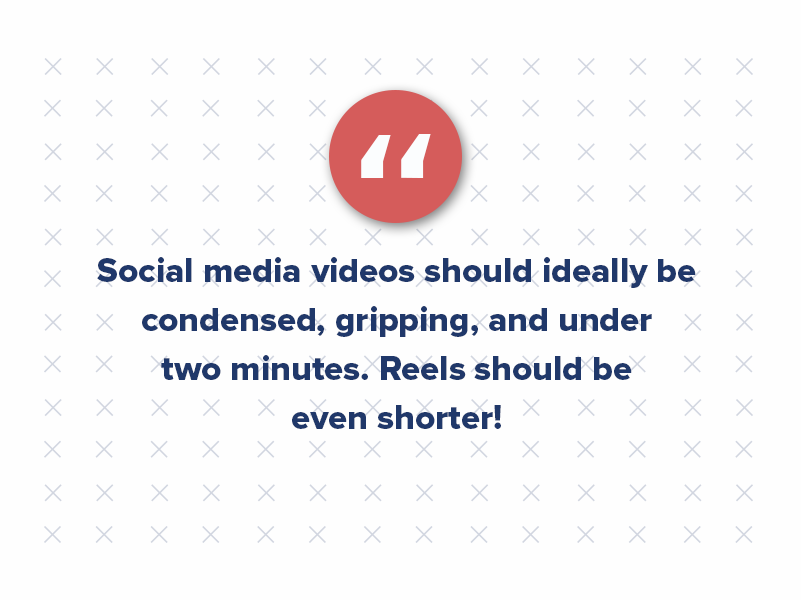
Embrace live videos, as these can be utilized for property tours, resident events, or Q&A sessions. Live interactions build authenticity and foster a deeper connection with potential residents.
2. Brand vs. Product
Brand videos offer a high-level overview of your company’s brand, mission, and style. This content can be clips of your office and showcase company culture, but it should not sell a product. You should consider a brand video as your mission statement.
Product videos, conversely, educate your audience about the benefits of your product or service. With this content, it is essential to highlight and explain customer benefits and not just the features.
Ensure you’ve added video components, landing pages, and promotional materials to your website. This enriches the user experience and positions your brand as current and responsive to digital trends.
3. Testimonials and Customer Spotlights
Customer spotlight or testimonials showcase one of your customers and how they benefited from your product or service. These videos offer a great alternative to your website’s traditional written testimonial.

At Criterion.B, we have seen word-of-mouth communication as a powerful force — especially when building brand trust. Trust is built organically by spotlighting real customers and narrating their positive experiences, making this a vital aspect of multifamily marketing. Your prospective customers will trust the opinions of your current customers more than they trust your website content, blog, or advertisements. Video testimonials are an authentic way to capture your customer’s feedback and potentially drive more multifamily leads to your business.
4. Trending Videos
As with all marketing endeavors, staying abreast of the latest video trends and innovations is crucial. Whether it’s new editing techniques, emerging platforms, or innovative content ideas, being in the know ensures your strategy remains competitive.
Trending videos leverage a trending or timely topic at the core, whether it’s a clip related to a holiday, an upcoming election, or just a hot topic within your industry.
For example, we developed a video on the importance of building buyer personas, featured during a panel discussion at NAA Apartmentalize. The clip was timely (for the event), trending (within the multifamily market), and relevant to all of our buyer personas. Watch the full video below!
5. Interactive Content
Interactive videos offer viewers a unique, participatory experience. You turn passive viewers into active participants by embedding quizzes, polls, or clickable links. This heightened engagement ensures better retention and provides invaluable feedback. In multifamily marketing, interactive content can virtually tour potential properties, allowing viewers to choose which areas of a residence they’d like to see or even select finishes and furnishings in real time.
6. SEO Video Marketing
Your video’s content is only as effective as its discoverability. SEO video marketing is vital. Ensure your video titles, descriptions, and tags are optimized with relevant keywords. Moreover, to make your content inclusive, provide subtitles or closed captions. This not only aids viewers with hearing impairments but also caters to those who watch videos without sound, which is a significant portion of viewers, especially on social media platforms.
Integrating these video marketing tips can further elevate your multifamily strategy, ensuring you reach a broader audience while providing engaging and valuable content. Remember, in today’s digital age, it’s not just about producing videos — it’s about creating videos that resonate, inform, and inspire.
5 Ways Video Content Can Drive Multifamily Website Traffic
With “doom scrolling” rising, capturing and maintaining a visitor’s attention on your website can be a significant challenge. However, integrating videos into your web content offers an effective solution. Here’s how:
1. Enhance Your User Engagement
Embedding videos in your blog posts or web pages can dramatically increase user engagement. Instead of skimming through a lengthy article, viewers can watch a video that summarizes or complements the content. This multimedia approach appeals to a broader range of learning styles — while some might prefer reading, others gravitate toward visual or auditory content.
2. Increase the Average Time on Page
One of the crucial metrics search engines use to gauge the quality and relevance of a page is the amount of time a user spends on it. A compelling video can keep visitors on your page for extended periods, signaling to search engines that your content is valuable. This can subsequently improve your site’s search engine ranking, making it easier for potential customers or readers to discover your content.
3. Reduce Bounce Rates
A “bounce” occurs when a visitor lands on a page on your website and leaves without interacting with any other part of your site. A high bounce rate can negatively impact your SEO ranking. Videos, with their innate ability to captivate, can mitigate this. By embedding a video, you’re giving visitors an additional reason to stay and explore, reducing the likelihood of a bounce.
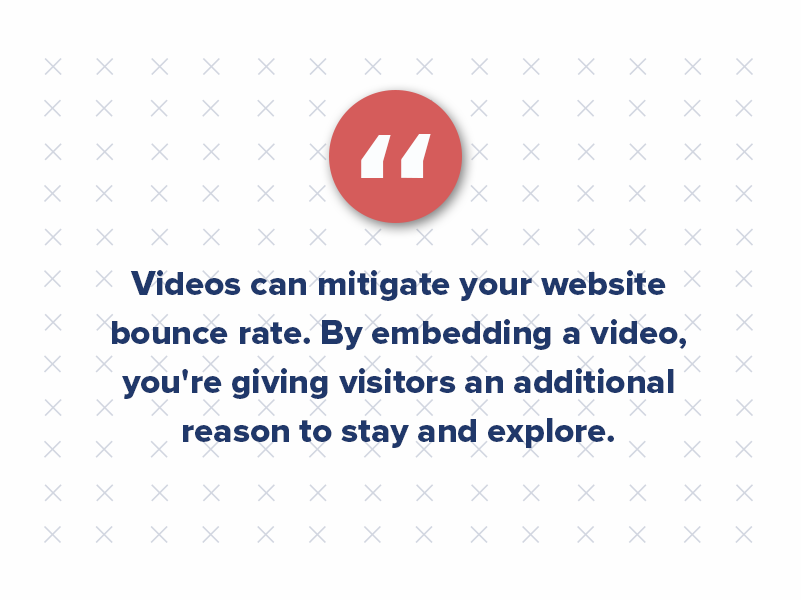
4. Boost the Shareability of Your Site
Video content is inherently shareable. Visitors who find your video insightful, entertaining, or valuable are likelier to share it on social media platforms or with their network. Every share increases the potential for more traffic to your website, creating a virtuous cycle of engagement and discovery.
5. Improve Your Content Diversity
A diverse content strategy appeals to a wider audience. By embedding videos in your blog posts, you’re catering to those who prefer watching over reading. This diversity can make your website a go-to resource for information, ensuring repeat visits and consistent traffic.
Captivate Your Customers With SEO Video Marketing
While social media videography plays a crucial role, broadening your scope to include video across your website, landing pages, and emails is vital. Don’t limit yourself to just one type of video. From explainer videos detailing your amenities to animated infographics showcasing resident testimonials, diversifying your video formats can cater to varied audience preferences and increase engagement.
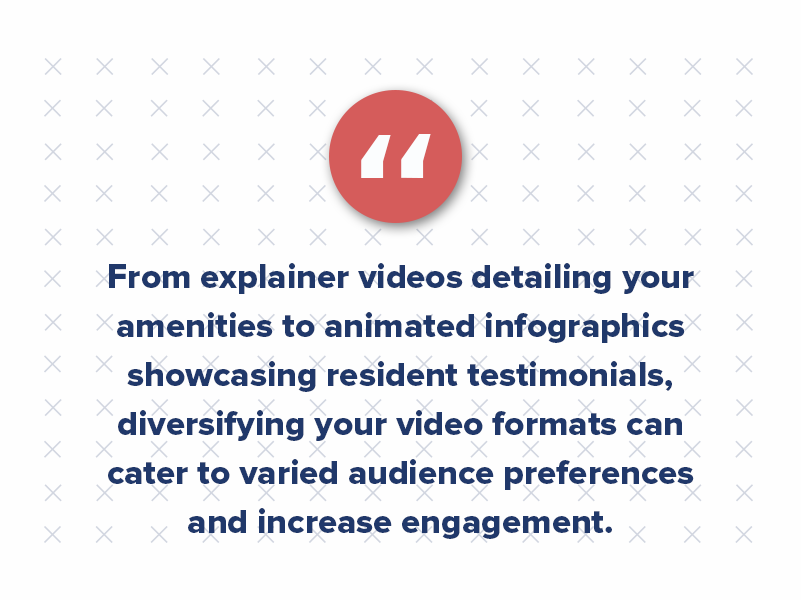
Delving into the benefits of video marketing reveals that it doesn’t just enhance engagement; it boosts SEO rankings, fosters trust, and increases conversion rates. Video marketing tips can help businesses optimize their content for SEO video marketing, ensuring their videos rank higher and reach a broader audience.
While the concept of branded video content’s immense multifamily marketing potential isn’t novel, its soaring popularity among consumers and its heightened significance to marketers certainly is. To stay competitive and resonate with your audience, harnessing this trend is no longer optional but imperative.

Maximizing Engagement and NOI With Instagram Marketing
Today, Instagram stands out as a game-changer, especially for multifamily digital marketing. With a user base majorly consisting of millennials and Gen Z, Instagram provides a dynamic platform that caters to the visual appetite of its audience, making it a prime tool in marketing.
Understanding Instagram’s Potential
At its core, Instagram is designed for sharing visuals — photos and videos. But it’s not just about simple picture-sharing; it’s about storytelling. With a plethora of editing tools and filters, you can elevate the aesthetic appeal of your photos, making them more engaging and resonating.
Whether you’re an individual or a property management company, the interactive features like commenting, favoriting, and tagging make the platform more dynamic. Its mobile-centric, scroll-friendly interface is what makes Instagram incredibly interactive and user-friendly.
Multifamily Properties & Instagram: A Perfect Match
Instagram isn’t just for influencers and brands; it’s a boon for multifamily properties and vendors. Here’s how you can leverage it:
- Show, Don’t Just Tell: Instagram’s visual-centric nature makes it perfect for multifamily properties to offer a sneak peek into their world. Be it a newly opened pool, the prep for a resident event, or delicious cupcakes in the lobby — let the residents see it. Highlight under-utilized amenities to generate interest. Remember, it’s not just showcasing facilities but emphasizing your property’s lifestyle and community vibe.
- Define Your Brand Personality: Before diving into Instagram marketing, it’s vital to identify your property’s tone and personality. Understand your target audience and tailor your content accordingly.
- Engage Your Residents Actively: With a substantial chunk of millennials active on Instagram, multifamily marketers can tap into the platform’s potential to boost resident engagement. Contests are a fantastic way to do this.
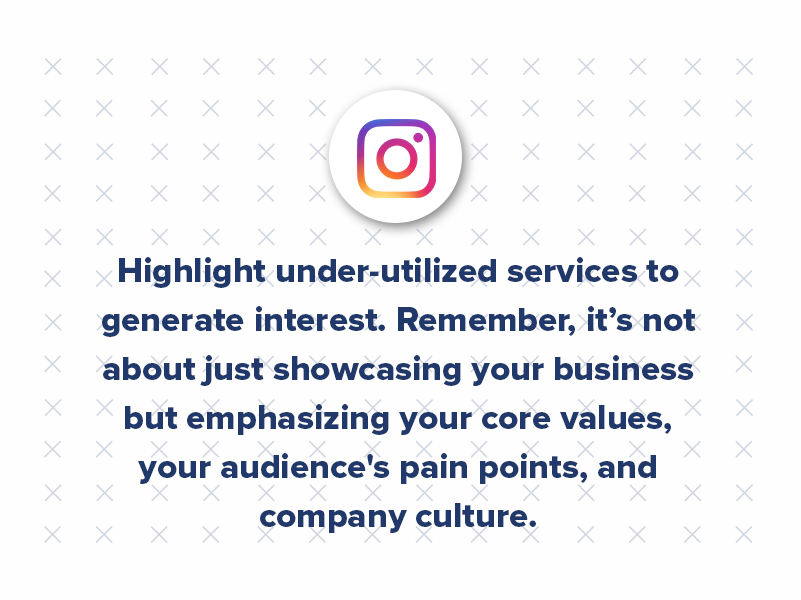
Leveraging Instagram in Multifamily Real Estate Investing
Instagram isn’t just a platform for residents and property managers; it’s a goldmine for multifamily real estate investing companies looking to position themselves as thought leaders and drive conversions. With its visually rich interface, Instagram can be an instrumental tool for showcasing industry insights, property highlights, and building trust among potential investors. Here’s how:
- Educational Content: Share bite-sized facts, stats, or trends related to multifamily real estate investing. Infographics and short video clips can effectively break down complex topics for your followers. These posts position your company as an industry expert and provide value to your followers, helping to build trust.
- Behind-the-Scenes: Showcase the inner workings of your company. Whether it’s a day in the life of your team, a property walkthrough, or the process of selecting a new investment property, giving a glimpse behind the curtain humanizes your brand and allows potential investors to feel more connected.
- Success Stories: Feature testimonials from satisfied investors or highlight successful property turnovers. Real-life success stories can resonate with potential investors, showcasing your company’s expertise and results in tangible ways.
- Engaging Polls and Q&A Sessions: Use Instagram’s poll feature or Q&A stickers in Stories to engage with your followers. This not only fosters interaction but can also provide insights into what your audience wants to know. Regular Q&A sessions can position your brand as transparent and responsive.
- Highlight Reels: Use Instagram’s highlight feature to categorize and save valuable content like property tours, investor testimonials, and educational snippets. This way, new followers or potential investors can quickly access and get to know your brand without scrolling endlessly.
- CTAs in Posts: Each post should serve a purpose. Whether you’re sharing an industry insight or showcasing a property, always include a call to action. It could be directing them to a recent blog post, inviting them to an investment webinar, or encouraging them to DM (Direct Message) for personal consultation.
- Leverage IGTV for In-Depth Content: Longer, in-depth discussions about multifamily real estate investing trends, strategies, or property evaluations can be shared on IGTV. This can benefit potential investors keen on understanding the nitty-gritty of the industry.
- Collaborate With Industry Experts: Collaborate with industry experts or influencers for joint live sessions or post-takeovers. This can expand your reach to their follower base and further cement your position as a thought leader.

Unlock Instagram’s Potential With Criterion.B
Instagram is a potent tool, not just for visibility but for building meaningful connections. It’s much more than a photo-sharing platform; it’s a multifamily digital marketing powerhouse waiting to be tapped.
As multifamily marketers, the goal is to think visually and strategically to engage current residents and attract potential ones. Need assistance with your Instagram marketing strategy? Criterion.B is here to help you navigate and maximize this dynamic platform.
Beyond Likes and Shares: 5 Facebook Strategies for Modern Student Housing
Generation Z has become synonymous with online interactivity. Having grown up during the rapid expansion of the internet and with smartphones always within reach, they are a generation that prioritizes digital communication over traditional methods. For Gen Z renters, expressing themselves through text or sharing weekend escapades on social media is the norm.
Struggling to connect with them? It’s a two-way street. Just as you might find their digital-first approach bewildering, they might be equally puzzled by older communication methods.
Dive Deep Into the Digital World of Gen Z Renters
If you’re in the realm of student housing development and wondering why social media should be your go-to communication tool, consider this: the window to engage with these students is relatively short. Missing out on the platforms they frequent means missing out on key interaction opportunities.
Let’s talk about Facebook to start. About 70% of American adults use Facebook. And you might be thinking, are any of those users even Gen Z renters? Recent studies show only about 7% of Gen Z users plan to quit Facebook in 2023. While this isn’t the “first choice” social media platform for this demographic, they still use it.
So, what’s the best way to tap into the heart of Gen Z’s digital life, especially on platforms like Facebook?
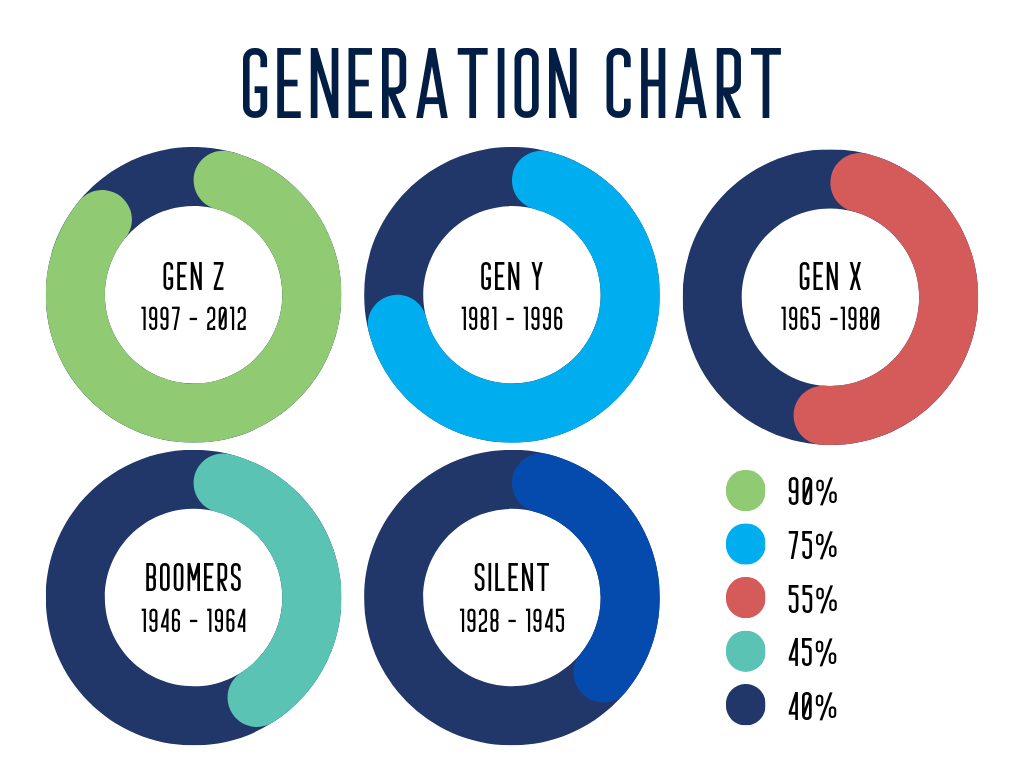
1. Promote On-Campus Events Digitally
If you’ve observed dwindling numbers at on-campus events, it might be time to rethink your promotional strategy. Traditional flyers might not just be environmentally unfriendly but might also not resonate with Gen Z renters.
Instead, create Facebook event pages to promote these events. Showcase visuals from previous iterations (if it’s an annual event) to blend tradition with contemporary outreach methods.
2. Quick Weather Updates
Imagine a scenario where unforeseen weather conditions, like heavy snowfall, disrupt regular schedules, and classes must be canceled. Instead of relying on email notifications that might go unread, why not use Facebook?
With Gen Z constantly scrolling through their newsfeeds, timely posts about weather alerts ensure immediate dissemination of crucial information.
3. Disseminate General Announcements
Got updates about the residential facilities, changes in semester timelines, or items in the lost and found? Facebook is your platform! Craft concise posts enriched with visuals (images or videos) to swiftly inform your student housing community.
4. Foster a Community With User-Generated Content
User-generated content is one of the most genuine ways to boost engagement and build a sense of community. Encourage your residents to share their unique experiences, be it a quiet study session in the lounge, a fun community event, or even a serene sunset view from their apartment window.
Launch monthly challenges or themes where students can share photos or stories about a particular topic or hashtag. Not only does this provide fresh, authentic content for your Facebook page, but it also allows residents to actively participate in creating the narrative of their community. Celebrate and showcase this content by sharing selected posts or creating monthly highlights. This validates your residents’ efforts and paints a genuine picture of life in your housing facility, which can be an invaluable tool for prospective students evaluating their housing options.
5. Utilize Facebook Groups for Direct Engagement
Did you know that 1.8 billion people interact in Facebook groups every month?
Beyond your primary Facebook page, consider setting up dedicated groups for different blocks, year groups, or special interest communities within your housing complex. Facebook Groups offer a more intimate setting for discussions, feedback, and announcements specific to group members.
For instance, a group dedicated to residents interested in fitness could have announcements about gym timings, fitness challenges, or even resident-led yoga sessions. Similarly, a group for a specific block or building can discuss maintenance issues, attend community meetings, or even organize block parties.
You can offer tailored content and create a more personalized resident experience by segmenting your audience. Additionally, these groups foster peer-to-peer interaction, helping residents connect over shared interests or concerns. It’s about broadcasting messages, facilitating conversations, and building a supportive community.
Social Media Isn’t Just a Tool
While the digital landscape and preferences of newer generations might seem complex, remember that platforms like Facebook were ironically first conceptualized for college students. Embracing such platforms for your multifamily marketing can bridge the communication gap, foster a vibrant community spirit, and attract new apartment leads. If done right, social media isn’t just a tool — it’s a transformative force.
Maximizing Occupancy & Revenue: Strategic Insights for Multifamily Property Success
High occupancy rates are the golden ticket to success in multifamily real estate. But how do you attract and retain tenants consistently?
Today, we’re diving into some tactical tips to boost occupancy and increase your net operating income (NOI). Through the lens of property management marketing and multifamily branding, let’s unlock the potential of your property.

1. Revamp Your Online Presence
Modern tenants scout online before they visit in person. And there is nothing worse than an unresponsive, slow-loading multifamily website. A modern web design can be the difference between one lead and dozens. Ensure your website is mobile-responsive, user-friendly, and provides comprehensive information, all while encapsulating your multifamily branding essence.
Our multifamily branding agency will deliver a high-quality, responsive website and handle your apartment marketing so you can focus on what matters most — nurturing your leads.
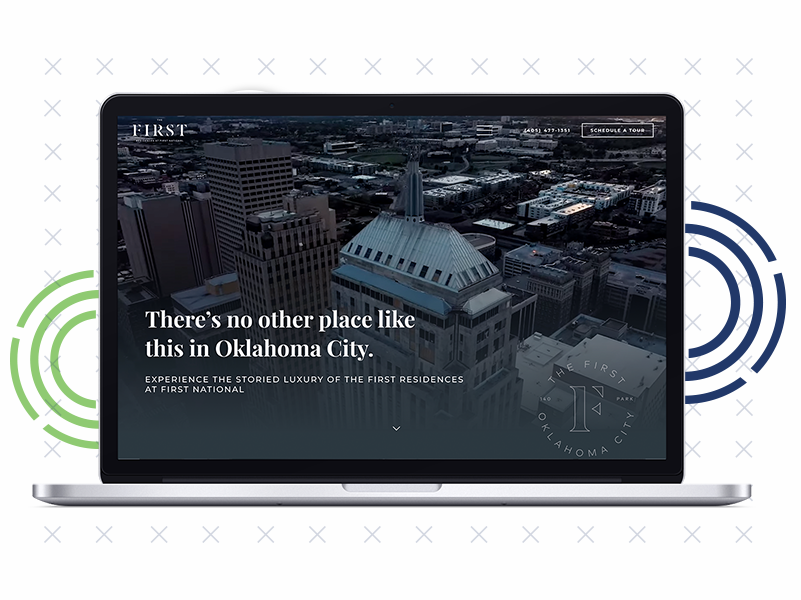
2. Dive Into Social Media
Social media is indispensable in property management marketing. Platforms like Instagram and Facebook can showcase your property’s amenities, community events, and testimonials.
We treat your social media as an extension of your website — by embracing your customers and serving them relevant content. Our team of social media experts will help adhere to your brand voice to concept, publish, and manage daily social media content — including Stories, Reels, and lead-generating ads.
3. Hire a Multifamily Branding Agency
Are there inconsistencies in your multifamily branding? Are you ranking low in search results — or even not at all? Are you losing leads to your competitors? Has your multifamily marketing plan fallen by the wayside? Don’t let sporadic multifamily marketing and branding stunt your NOI.
An expert multifamily branding agency can help refine your brand, ensuring it aligns with your target audience and stands out from competitors. An agency can also offer invaluable insights and solutions to uplift your brand. Our seasoned perspective ensures your brand resonates with your target audience, distinguishing you from competitors. Moreover, with our comprehensive market knowledge and analytical approach, we can identify and rectify hidden challenges or overlooked gaps hindering your brand’s full potential and stunting your NOI.
4. Host Community Events
Community BBQs, game nights, or workshops can provide a sneak peek into the vibrant life prospective tenants can expect, driving occupancy. We recommend hosting small, more affordable events every month (at least) and larger events every quarter. You should also aim for one significant event open to the public each year, such as a large Battle of the Bands, a Christmas celebration, or a charity event with raffle prizes. These large events will draw in the broader community and spread the word about your property.
5. Offer Referral Incentives
Encouraging current residents to refer friends or family is a strategic move in resident acquisition. Many trust recommendations from those they know, making this a reliable method to attract potential renters. Offering your current residents a discount on their next month’s rent or a bonus, such as a gift card to a popular local restaurant, can incentivize them to promote your property actively.
6. Professional Property Photos
High-quality photos can make a vast difference in online listings. Consider hiring a professional for interiors and exteriors to put your best foot forward. A multifamily branding agency can also help you coordinate a professional photographer, so there is no sweat off your back!
7. Revise Your Marketing Materials
Update brochures, banners, and flyers. Ensure all marketing for property management showcases the latest amenities, resident testimonials, and any recent renovations. If you recently rebranded your online presence, you need this to reflect in your marketing materials.
A multifamily branding agency can help you pinpoint all the collateral pieces that need to be updated and upscale those branding elements to match the look and feel of your new brand experience. From rack cards and brochures to banners and event flyers, we can help you generate apartment leads with premium collateral.
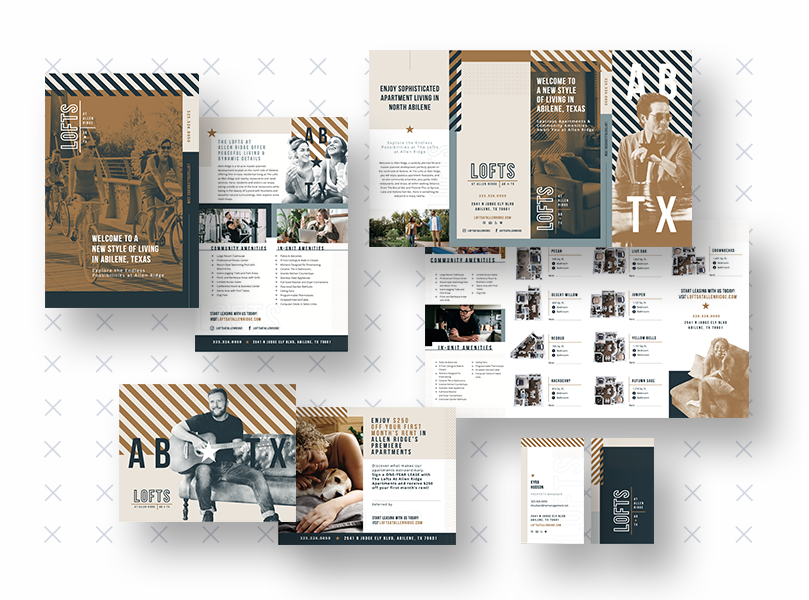
8. Enhance Security Measures
Safety is a top priority for many renters. Implement security cameras, keyless entries, or 24/7 security personnel to boost your property’s appeal. Once these are all updated, promote them with pop-ups on your website, add them to social media, and send an e-blast newsletter to current and prospective residents on your email list. This can show current residents you are bettering the property for their benefit and show prospective renters that you prioritize a safe community.
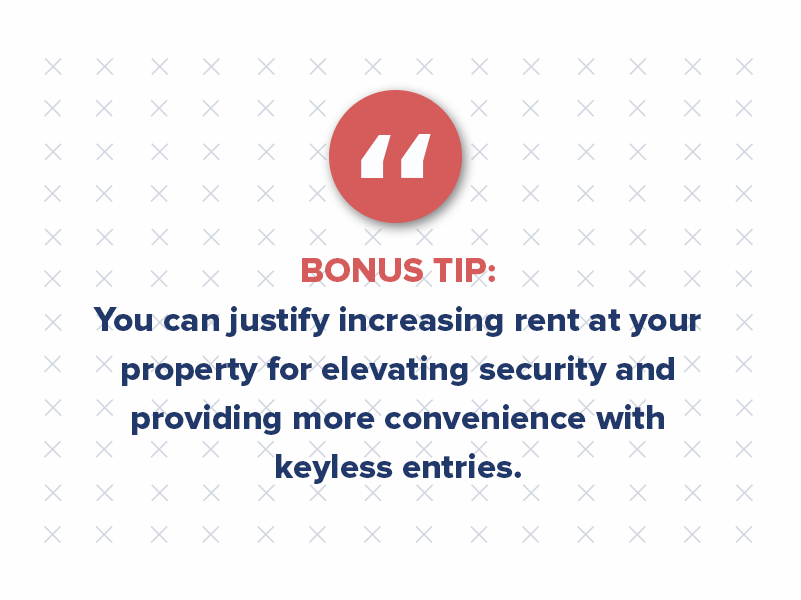
9. Offer Flexible Lease Terms
While not ideal for all properties, consider short-term leases or rent-by-room options. Flexibility can attract a wider range of potential residents. The short-term rental industry has seen an unprecedented surge in growth in recent years. In fact, the short-term rental market is expected to reach a valuation of $8,907.1 million by 2026. If your property has the means and logistics to tap into this market, you could open the door to some lucrative NOI.
10. Pet-Friendly Policies
Did you know that 72% of renters have pets, yet problems finding and keeping rental housing is a leading reason dogs and cats wind up in shelters?
Despite pets being prevalent in two-thirds of American households and integral to communities, many renters face challenges securing pet-accommodating residences. Shockingly, this housing dilemma leads to over half a million pets being surrendered to shelters annually, with many failing to find new homes. Even though the rental housing sector claims about 78% of apartment complexes are pet-friendly, the reality often contrasts starkly. Many properties impose weight restrictions, such as no dogs over 25 lbs. or having breed limitations. Hence, “pet-friendly” doesn’t truly represent most of America’s pets.
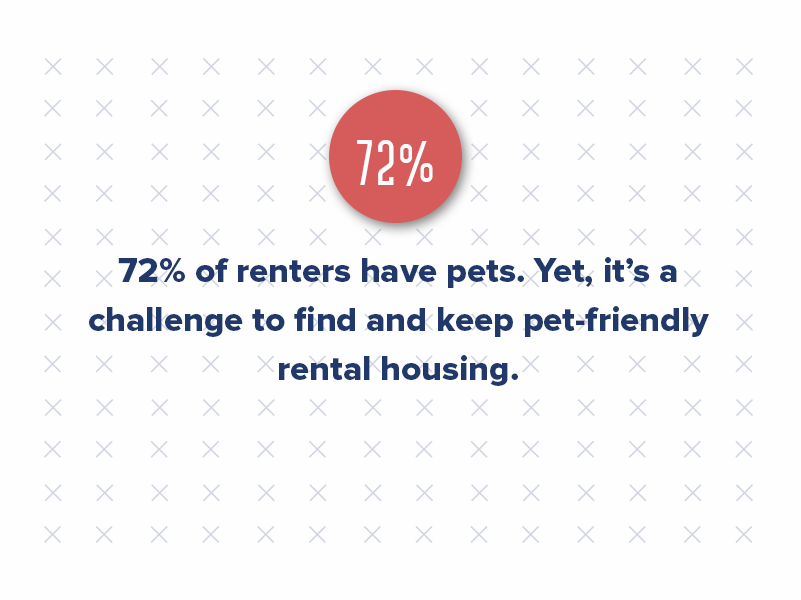
With more people adopting pets, offering a true pet-friendly policy (with appropriate rules) can be a significant attraction. Massive bonus points for the properties that also offer up pet-friendly amenities like dog washing stations, pet parlors, dog parks, and more. (p.s. This is also another way you can justify a rent increase!)
11. Implement Tech Upgrades
In today’s digital age, properties need to adapt to the ever-evolving technological demands of residents. Smart home features, such as voice-activated lighting, automated thermostats, and advanced security systems, offer convenience and modern living standards that appeal to a wide audience. High-speed internet has transitioned from a luxury to a necessity, especially for remote workers, avid gamers, or streaming enthusiasts.
Additionally, app-based service requests provide residents with a seamless way to communicate their needs directly to property management without the hassle of calls or in-person visits. As most people, regardless of age, have become adept with technology, integrating these features can significantly enhance the living experience and make a property more attractive to potential renters.

12. Maintain Immaculate Common Areas
First impressions matter. A visitor’s initial encounter with a property often sets the tone for their entire experience. Lobbies, hallways, and other shared spaces are the first touchpoints for prospective residents. Regularly cleaning and updating these areas is crucial for aesthetics and communicating the property’s commitment to maintaining a high-quality living environment. A clean and modern space exudes professionalism and care, making it a no-brainer for properties aiming to attract and retain residents who value such attention to detail.
13. Engage in Local Collaborations
Partnerships with local businesses can be a game-changer for multifamily properties looking to enhance the resident experience. Here are some ideas to get you started:
- Collaborate with the neighborhood café to offer exclusive morning coffee discounts for residents.
- Strike a deal with a nearby gym, providing discounted memberships or trial sessions.
- Local spas or wellness centers could provide tailored packages or special rates for residents.
- Coordinate with nearby bookstores, theatres, or artisanal shops to host monthly events or offer promotional deals to your residents.
By intertwining with the local business ecosystem, properties boost the appeal of community living and foster a deeper sense of belonging and convenience for their residents.
14. Actively Gather and Showcase Testimonials
Testimonials play a pivotal role in property management marketing. To encourage satisfied residents to share their experiences on platforms like Google, Yelp, or even Facebook, properties can implement a few thoughtful measures.
- Create a straightforward process for leaving reviews, perhaps by sending periodic reminders with direct links to the review platform.
- Consider hosting community events or appreciation days, and during these events, set up kiosks or dedicated spaces where residents can quickly drop a review.
- To motivate residents to share their feedback, offer small incentives, such as raffle entries or discounts on community amenities.
- To foster a culture of appreciation and engagement, regularly spotlight and thank residents for their positive reviews in community newsletters or social media.
Properties build trust with potential tenants and reinforce their commitment to current residents by actively seeking out and celebrating testimonials.
15. Offer Move-in Specials
Properties need to think creatively to catch the attention of potential tenants. Limited-time offers can be a game-changer in this regard. By providing reduced deposits, properties can appeal to those who might be budget-conscious or hesitant about the initial financial commitment. Offering a free month’s rent generates buzz and can provide the gentle nudge a prospective renter needs to choose your property over another.
Additionally, bundled utilities simplify the living experience, removing the hassle of multiple bills and presenting a more streamlined approach to monthly expenses. Combined, these incentives showcase the property’s commitment to providing value and position it as an accommodating and tenant-centric choice in a sea of options.
16. Efficient Response Systems
Prompt and clear communication is a cornerstone of building trust with potential renters. In an era where instant messaging and rapid customer service have set expectations for quick responses, any delay in addressing queries can reflect how the property operates.
When potential renters reach out with questions or concerns, they are not just seeking answers; they are gauging the responsiveness and reliability of the property management team. Addressing their queries promptly provides clarity and showcases a property’s commitment to tenant satisfaction.
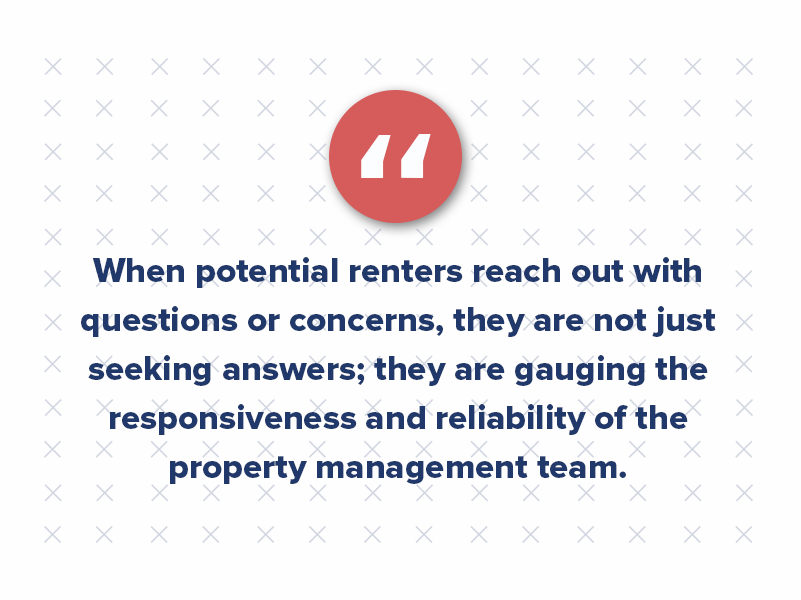
Efficient communication can often be the determining factor in a renter’s decision-making process. It bridges the gap between initial interest and final commitment, ensuring potential tenants feel valued and understood, ultimately making it more likely for them to choose your property over others.
17. Regular Market Analysis
Property managers and owners must be attuned to the pulse of the local rental market. With fluctuations in demand, economic shifts, and seasonal variations, rental prices can be highly dynamic. Staying updated on local market trends can help you gain insights into what competitors are charging, what amenities are in demand, and what potential renters prioritize in their housing search.
Proactively adjusting pricing in response to these multifamily trends doesn’t just ensure you remain competitive; it also demonstrates to potential residents that the property is in touch with the community’s needs and is adaptable. In a market where every edge counts, this level of responsiveness can be the difference between a fully occupied property and vacant units.
18. Enhance Green Spaces
An oasis of greenery in the form of well-maintained gardens, terraces, or even strategically placed indoor plants can significantly elevate the aesthetic and ambiance of a multifamily property. Beyond just their visual appeal, these green spaces and elements contribute to a sense of tranquility and well-being, offering residents a respite from the hustle and bustle of urban life.
The presence of plants can also improve air quality, acting as natural air purifiers. By investing in landscaping and indoor plants, properties not only enhance their visual appeal but also create a healthier and more rejuvenating environment. Such thoughtful touches signal a property’s commitment to providing residents with a holistic living experience, making it more enticing for potential renters seeking more than just four walls and a roof.
19. Invest in Upscale Amenities
Multifamily properties that offer more than just living spaces are capturing the attention of discerning renters. Common areas such as state-of-the-art gyms with the latest fitness technology, co-working spaces catering to the growing number of remote professionals, or entertainment zones with gaming areas and mini-theaters can truly set your property apart. These unique amenities serve as value-added propositions, providing residents with convenience, luxury, and diverse lifestyle options right at their doorstep.
These premium features offer a richer living experience, which warrants a justified increase in rent. When residents perceive tangible value in these amenities, they’re more likely to understand and accept a slightly higher rental cost. Ultimately, by elevating the standard of living through these specialized common areas, properties can significantly enhance their NOI while fostering a greater resident experience.
20. Continuous Staff Training
Investing in thorough staff training, especially in customer service excellence, is not just a box to tick; it’s a strategic move for the longevity and success of your multifamily property. Cutting corners in staff training can lead to missed opportunities, miscommunications, and unsatisfactory resident experiences, which can negatively impact your property’s reputation and occupancy rates.
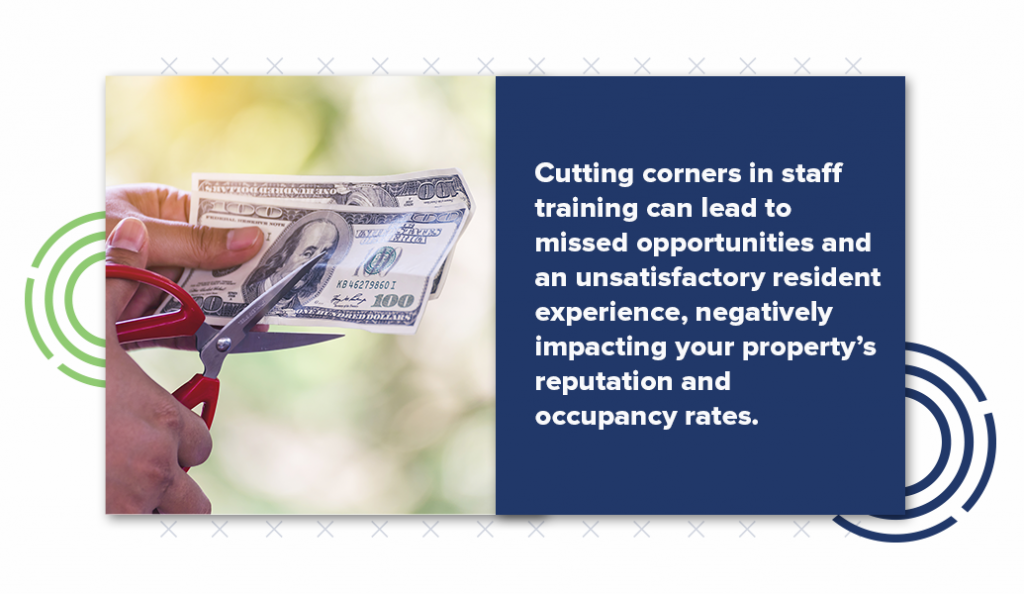
When residents see familiar faces in the management team and service personnel, it fosters a sense of community and trust. Familiarity can often translate to increased comfort and security, which is essential in a resident’s decision to renew their lease.
On the flip side, frequent staff turnover can incur additional costs in hiring and training, and it may disrupt the seamless operation and rapport built with residents. In essence, by prioritizing staff training and retention, properties ensure smooth operations and a positive environment and enhance their bottom line by minimizing unnecessary expenses and optimizing renter satisfaction.
Boosting Demand with Comprehensive Multifamily Branding
Increasing occupancy and NOI is a blend of strategic multifamily branding, robust property management marketing, and understanding tenant needs. With these tips and the expertise of a multifamily branding agency, property managers can navigate the challenges of the rental market, ensuring their properties remain in high demand. Remember, in real estate, multifamily branding isn’t just a name — it’s an experience.


